Albania is regarded as one of the last "off-road" paradises in Europe, together with Iceland and Romania. Numerous tracks lead through beautiful, mountainous landscapes and guarantee great views and idyllic parking spaces for the night. On a small area you will find an amazing variety of natural areas and landscapes in Albania. If you love nature and mountains and maybe even have a four-wheel drive camper, you will be thrilled by the small mountainous country in the Western Balkans. In my article you can read which highlights I can recommend for your road trip in Albania. You will also get further helpful information and tips for Albania including a route suggestion and a map.
Non-solicited, unpaid advertising. This article contains affiliate links*, marked with an asterisk.

What you will find in my Article:
Albania - an underestimated Travel Destination
Road Trip Albania - Map with our Route and Pitches
Our Motorhome "Arwak" - the Iveco 40/10 WM
15 Highlights for your Road Trip in Albania
#1 With the 4x4-Camper to Theth
#2 Ferry Trip over the Koman Lake
#3 The Valbona Valley in the Albanian Alps
#4 The "Offroad" track at the Black Drin
#5 Lake Ohrid & Detour to Macedonia
#6 Tirana - Architecture and History
#7 Berat - the City of 1000 Windows
#8 Osum Canyon, Thermal Springs in Benje and Lengarica Canyon
#9 Gjirokastra with its imposing fortified Houses
#10 In the dry Riverbed from Tepelene to Himare
#11 Albania's Coast - a little bit of everything
#12 Saranda and Butrint
#13 Lost Places
#14 Bunker
#15 Monuments from the Communist Era
General Tips for your Roadtrip in Albania
Roadbooks - Travel Guide - Road Map
(sorry, the books here are only in german language)
Recommendations for further Reading - more Roadtrips
Albania - an underestimated Travel Destination
A brief Summary of recent History
Albania was led for about 40 years by the communist dictator Enver Hoxha. Under Hoxha Albania became the first and only atheist state in the world. In addition, the dictator drove the country into complete isolation: in 1968 he resigned from the Warsaw Pact, breaking off relations with the Soviet Union. After the death of Mao (1976) and the beginning of the first reforms in China, he also broke off with China. Meanwhile, thousands of Albanians fell victim to " clean-up operations ", the population was controlled by the secret police and the country was on the verge of economic collapse.

Only after Enver Hoxha's death in 1985 was there new hope. At least until the so-called pyramid scandal, a money laundering business that drove the civilian population into financial ruin. Mass protests against the government and a civil war in 1997 followed, state institutions were devastated and anarchic conditions prevailed. The government was helpless. With the support of an international peacekeeping force and humanitarian aid troops, security was restored and reconstruction began.
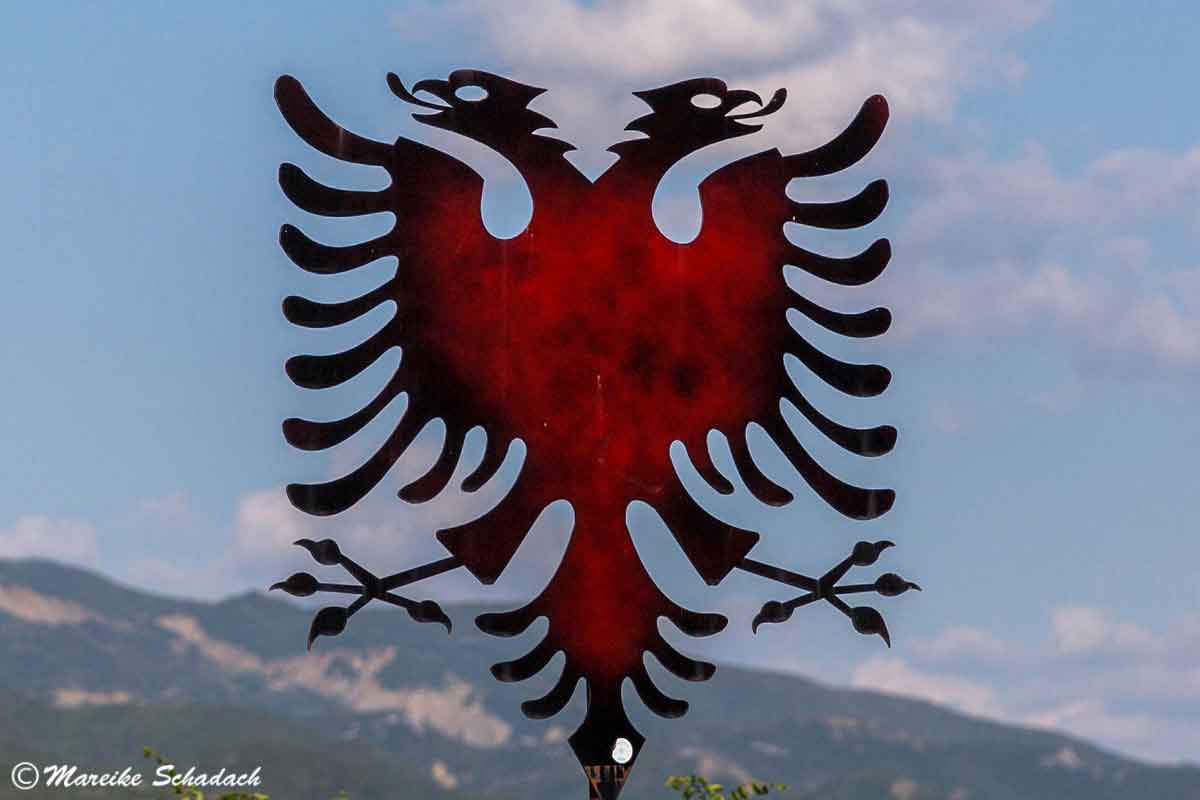
Tourism in Albania
During the dictatorship tourism was strictly regulated. Not everyone was allowed into the country. Hippies were unwanted, women's skirts were not allowed to be too short and men's hair not too long. They probably wouldn't have let us in at that time.


The number of tourists reached a low point during the civil war with 119,000 visitors. It was 10 years later, in 2007, that over one million guests came to Albania for the first time. By 2017 the number had risen to 4.6 million. That is still not many. For comparison: the average number of visitors in countries in Southern Europe is 16 million (www.laenderdaten.info).
What makes Albania so interesting for tourists? A lot is still in the development stage here. Even the locals themselves are still exploring their own country. In the era of all-inclusive mass tourism, travellers can feel like discoverers here. Much of nature is freely accessible. There is a freedom of movement that is no longer available in many European countries. The best example is the freedom to camp, which makes every road trip in Albania a highlight. Another point is also the interesting history. Especially for all those who are interested in the communist past.

Tourism has now been recognised as a source of income. The tourist infrastructure has developed rapidly since then. In the Albanian Alps, great importance is attached to sustainable tourism. But on the coast, beach hotels are springing up like mushrooms and gravel roads are increasingly being asphalted. To the regret of the passionate offroad drivers. But in many areas of the interior tourism has not yet arrived. And that was exactly the reason why we travelled to Albania in summer 2018. We wanted to experience the original, rural Albania.

Road Trip Albania - Map with our Route and Pitches
Our entire route from Berlin to Saranda was 3,063 kilometres long. We drove for four weeks through eight countries: Germany, Austria, Slovenia, Croatia, Bosnia-Herzegovina, Montenegro, Albania, Macedonia. In Saranda, in the very south of Albania, we handed over the camper to our friend Ingmar. Ingmar is co-owner of the Iveco and drove it back to Berlin on his own road trip. We ourselves flew back from Corfu to Berlin. Carsharing & Travelsharing - practical, isn't it?
On the map you can see all the highlights and night pitches during our road trip in Albania. I have entered the route we drove and also added a few photos. So you have a good idea what to expect.
Our Motorhome "Arwak" - the Iveco 40/10 WM
Our faithful vehicle and our loyal companion. The tour in Albania was now our second bigger road trip, where "Arwak" brought us back home healthy and filled with many great experiences. But with the name it all has to work out. Because "Arwak" is the name of one of the horses that pulls the wagon of the sun goddess Sol along the arch of heaven. What could be more suitable for a motorhome? Do you want to know more about Arwak, the Iveco 40/10 WM? Then look here, he has his own page.
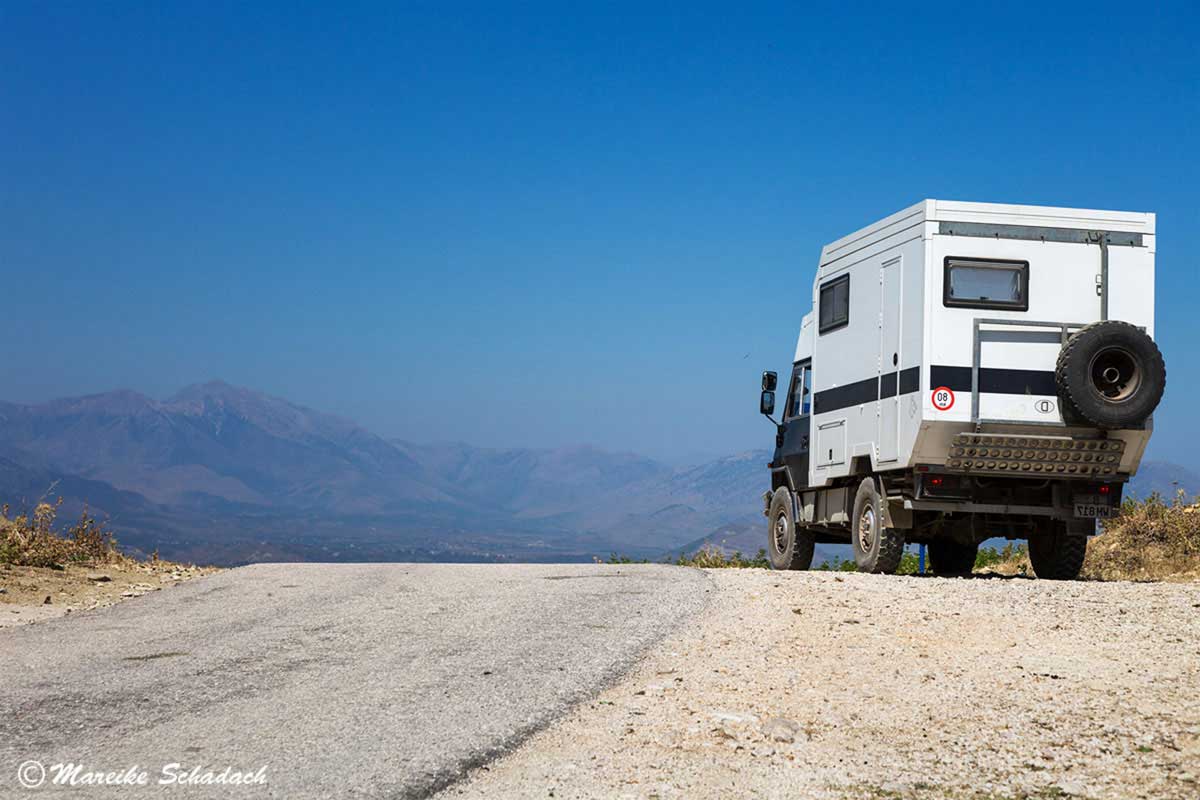
15 Highlights for your Road Trip in Albania
The small country Albania has a lot to offer in terms of landscape and architecture: Mountains with an alpine character, wild rivers, blue lakes, white beaches, canyons and some exciting gravel roads. About 200.000 bunkers are embedded in this beautiful landscape. In addition there are typical fortified houses, bizarre lost places and monuments from the communist era. In the following I have compiled 15 highlights of our road trip in Albania. Each one contains a short description, tips for your own explorations and of course many photos.
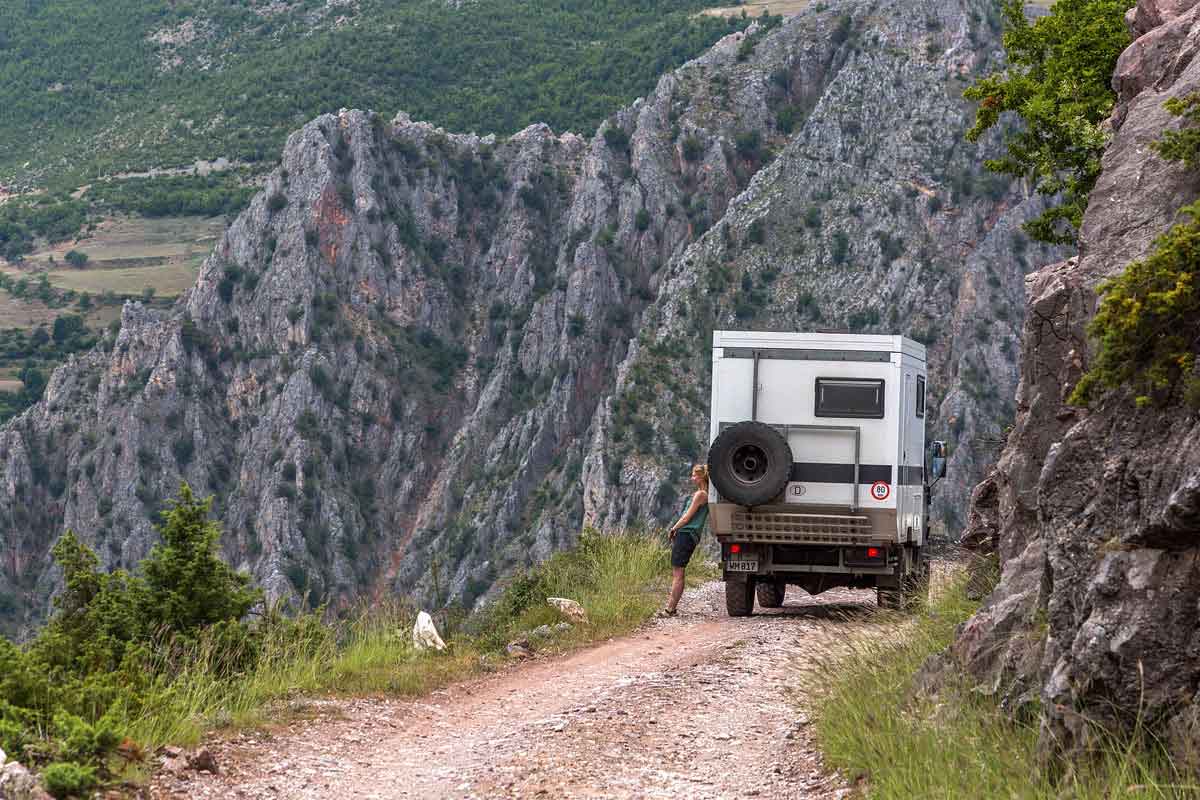
#1 With the 4x4-Camper to Theth
The trip to the mountain village of Theth was the first stage of our road trip. The village, which has just 4,000 inhabitants, is located in the Albanian Alps at an altitude of 742 meters and in 2018 could only be reached via a dirt road. In the meantime the road is said to have been asphalted.
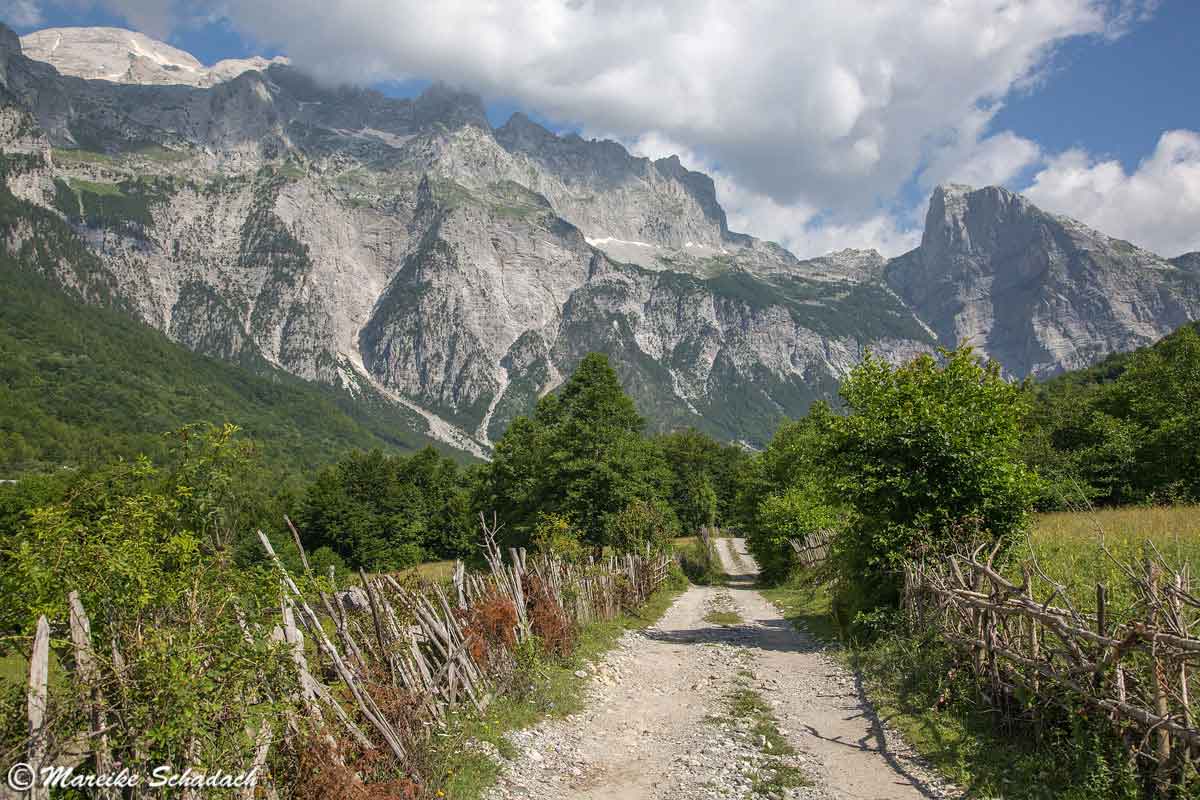
The Theth National Park was established in 1976. It is a fine example of a rural, ancient cultural landscape that stretches across the valley. The valley is surrounded by high mountains, mountain forests and pastures. The landscape is similar to our Alps and the peaks reach up to 2,600 metres. In the village itself, the large grey stone houses stand far apart. In between there are always vegetable gardens and meadows. A rural idyll! If you have a little more time you have the possibility for extensive hikes on well marked paths in a breathtaking landscape.
In my separate article Roadtrip Albania - with the 4x4-Camper to Theth you will learn why this mountain village was one of our highlights.


How do I tell my camera?
You are sometimes not sure how to get your camera to take the shots the way you want it to?
Karin and Markus from Fotonomaden explain it step by step in their online course* or in their 1:1 coaching* (sorry, only in German).
#2 Ferry Trip over the Koman Lake
A trip with the ferry over the Koman Lake is an absolute highlight and should not be missing on any Albania trip. The about 2,5 hours lasting trip through the Albanian Alps is one of the most beautiful river trips I have experienced so far. To the left and right are the rocky canyons of the Drin and remind me of the Norwegian fjords. The reservoir crosses the mountain range here over a length of 34 kilometres. The valley is not wider than 400 meters and the mountains rise several hundred meters. At its narrowest point, the Koman Lake is only 50 metres wide.
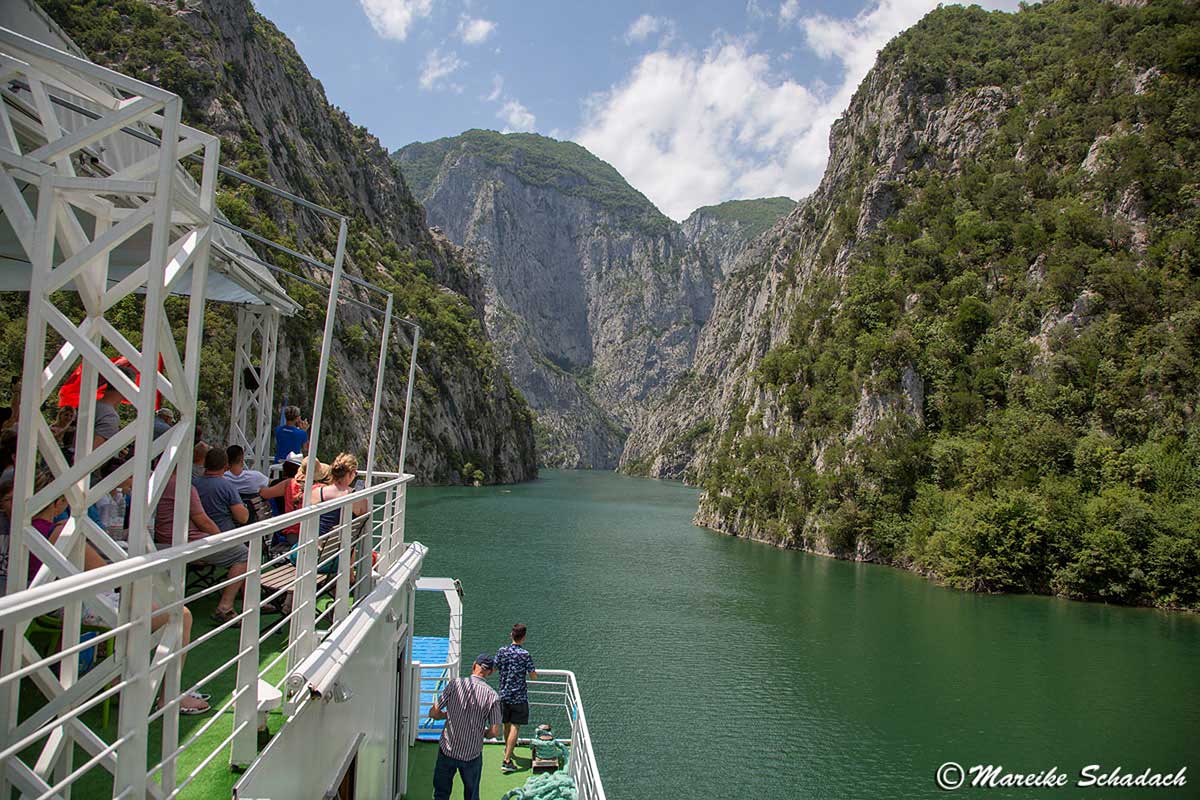
The trip with the ferry from Koman to Fierze was the second stage of our road trip through Albania. In my separate article you can read more about this unique Ferry Trip over the Koman Lake.
#3 The Valbona Valley in the Albanian Alps
From the ferry pier in Fierze it is about 43 kilometres to Valbona in the north-east of Albania. The mountain village lies in the valley of the river Valbona, secluded in the Albanian Alps. On both sides of the valley rise rugged rocks and high mountains with peaks of up to 2,694 metres. Bears, wolves and chamois live here. The whole area around Valbona is protected as National Park Valbona Valley.
The Valbona Valley is easily accessible via an asphalt road, even in winter. The Valbona river, interspersed with rocks, accompanies the road for a while, but then disappears deep into the bedrock of the karst rocks. At the end of the road, there is only a dirt road through the dry riverbed to the village of Rragam. But no matter if road or dirt road: both are surrounded by a fantastic, wild landscape of forests, mountains, caves, mountain lakes and alpine meadows.

Due to the beauty of the landscape and the great hiking possibilities Valbona has become a tourist magnet. There are many small guesthouses and rooms. A few years ago, when a hotel chain wanted to build a large hotel complex here, the inhabitants united to face the excavators. They prevented the construction of the hotel and preserved the valley for a more sustainable tourism.
The main attraction of the Valbona Valley is the numerous hiking possibilities. There are easy walks, tours lasting several days and strenuous summit tours for experienced mountaineers. The one-day hike from Valbona over the Valbona Pass (1812 m) to Theth is popular. There is even the possibility to return from Theth to Valbona by minibus and ferry across the Koman lake to Valbona to a parked vehicle. The hike can also be booked as an organized round trip from Shkodra via Koman and Valbona to Theth and back to Shkodra.
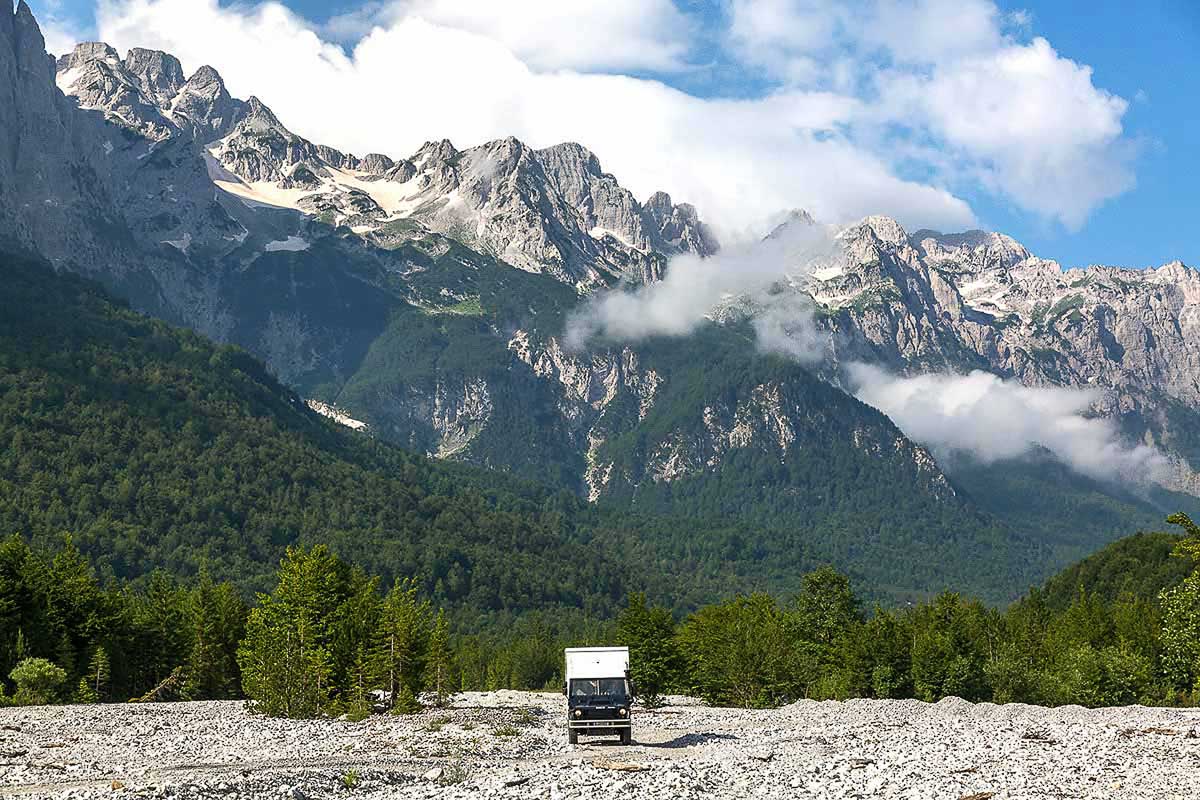
#4 The "Offroad" track at the Black Drin
The route along the Black Drin is a cult route and extremely popular among off-road travellers. The track in the north-east of Albania takes you through a varied landscape with fantastic views of the Black Drin river valley. The fertile mountain slopes are used for farming and you will see small farmsteads and at the end of the track also small settlements.

In serpentines, the 56 kilometres long track first winds down to the river valley. Adventurous bridges span the Black Drin and make the driving pleasure even more enjoyable. In my separate article you can read what to expect on The "Offroad" track at the Black Drin .
Ideas for your next Road Trip
Are you looking for ideas and inspiration for your next road trip or for your camping stove? Then I can recommend these books*.
You can order the books at Amazon by clicking on the pictures. If you buy a product via an affiliate link, I get a small commission and you help me to keep filling Fernweh-Motive with interesting articles. The product will not be more expensive for you and you do me a huge favor.
#5 Lake Ohrid & Detour to Macedonia
Lake Ohrid is the second largest lake in the Balkans and is partly in Macedonia and partly in Albania. The deep blue lake is framed by an impressive mountain scenery with peaks of up to 2,200 metres. The age of Lake Ohrid is estimated at two to five million years. It is therefore one of the oldest lakes in the world. Animal and plant species have developed here that are found nowhere else. The shores of the lake are also among the oldest settlement areas in Europe.

Lake Ohrid is an important nature reserve and is therefore protected as UNESCO biosphere reserve. Furthermore, the lake and the old town of Ohrid are listed as UNESCO World Heritage. There are many places worth seeing on the lake shore, camping facilities and the opportunity for a very special dive.
Time Travel in the Village Lin
A visit to the village Lin, on the western shore of Lake Ohrid, is like a journey through time. Narrow alleys lead to the shore, where there are countless moorings for small rowing and motor boats. In the centre of the village you can forget the time with a drink on the terrace of the restaurant Leza. A small hiking trail leads you around the headland. You will see gardens on the shore of Lake Ohrid where the locals grow their vegetables. On the rocks you will also find great places for a picnic with a view. And maybe you'll even have a few of the sheep running free here to keep you company.


Side Trip to Macedonia - the City of Ohrid and diving in the "Bay of Bones"
If you have the time, then a trip to Macedonia is definitely worthwhile. The city of Ohrid is a real gem. Especially the church of St. John is worth seeing and certainly one of the most photographed churches in the country.
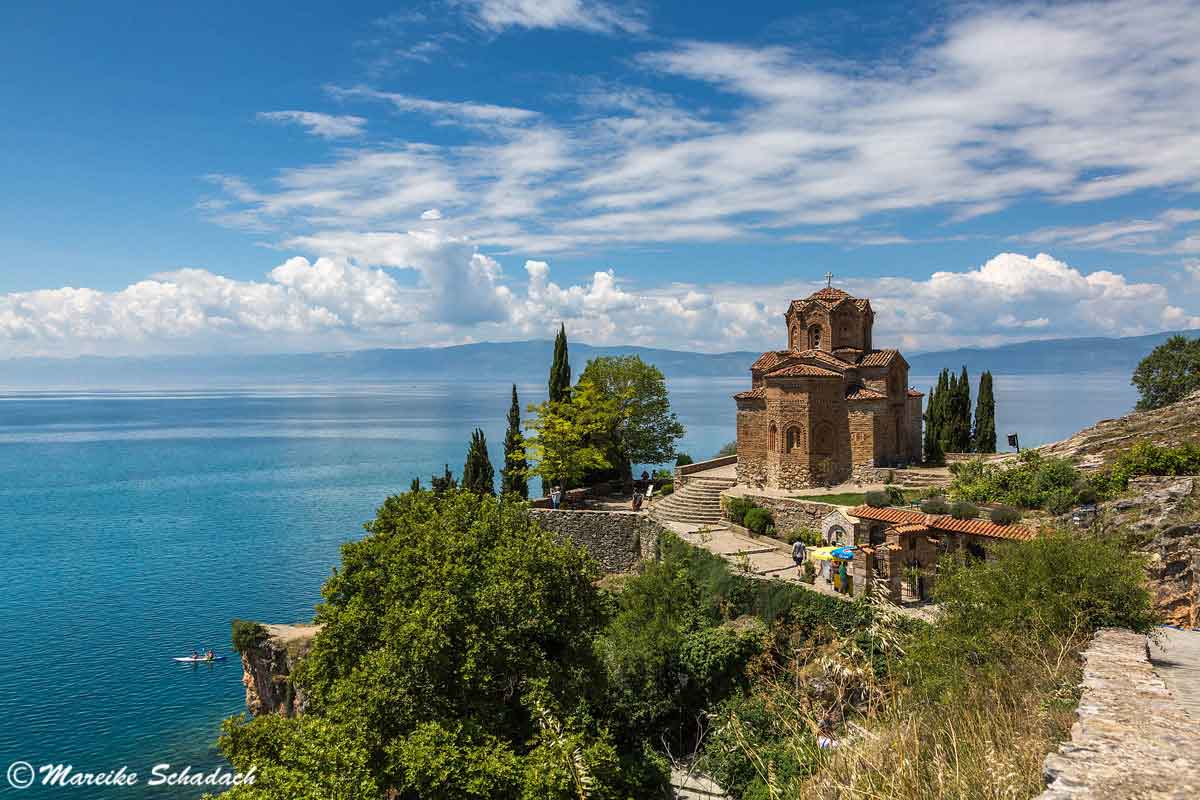
If you continue east from Ohrid, you will arrive after 30 minutes in the Bronze Age. In the "Bay of Bones" remains of a Bronze Age lake dwelling were found. The settlement has been reconstructed and is now an open-air museum. Do you know how to dive? Then what about a dive into the Bronze Age? Under water you can still see remains of the original piles, as well as other artefacts such as shards, jewellery or bones.
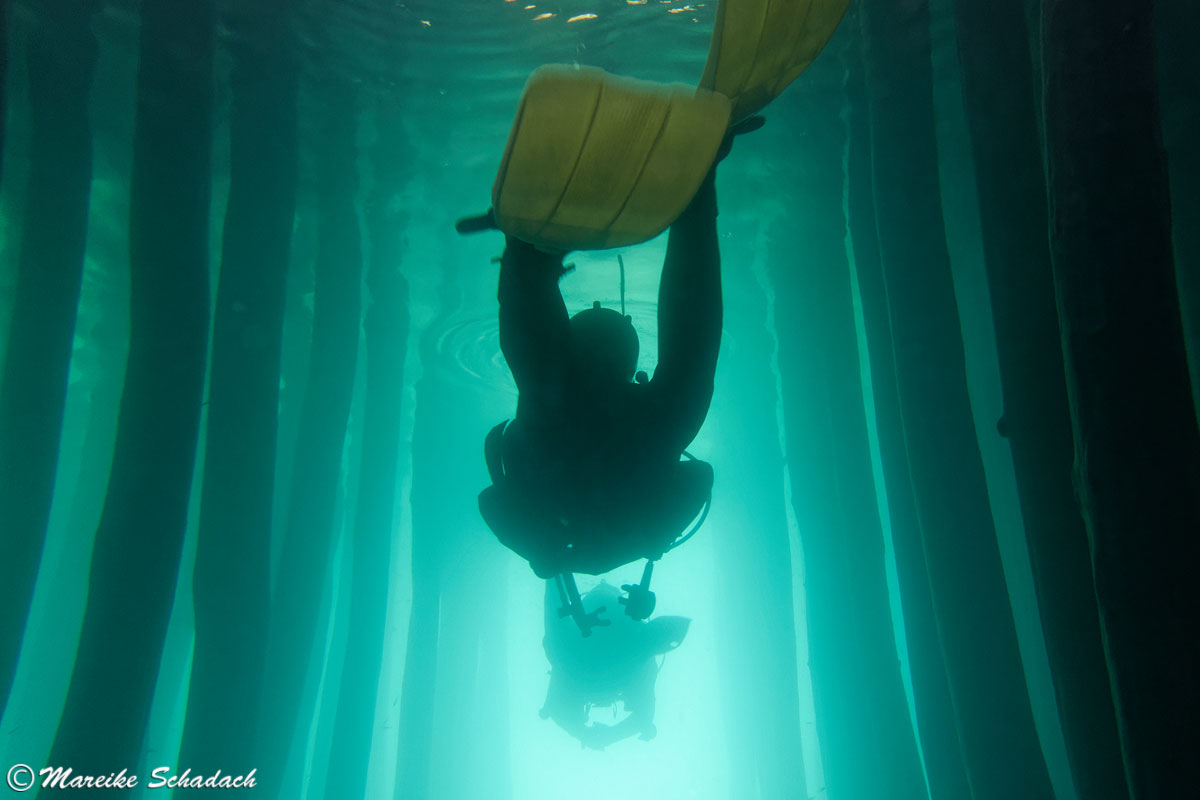
#6 Tirana - Architecture and History
Architectural Highlights
Tirana - the capital of Albania - is a city with many faces. In the centre, old and new, poor and rich, and western and eastern culture mix. You can see this particularly well at the central Skanderberg Square. Here a mosque stands next to the Soviet-style monumental buildings. New buildings with chic shops mix with old buildings. After a 10-minute walk, you will reach a particularly building from here: the Pyramid of Tirana. The building was inaugurated in 1988. At that time it housed the Enver Hoxha Museum and was covered with gold mirrored plates. It is said to have been the most expensive communist building to that time. Today it is a lost place in the middle of the city. And in the future? There are plans to convert the pyramid into a youth centre.
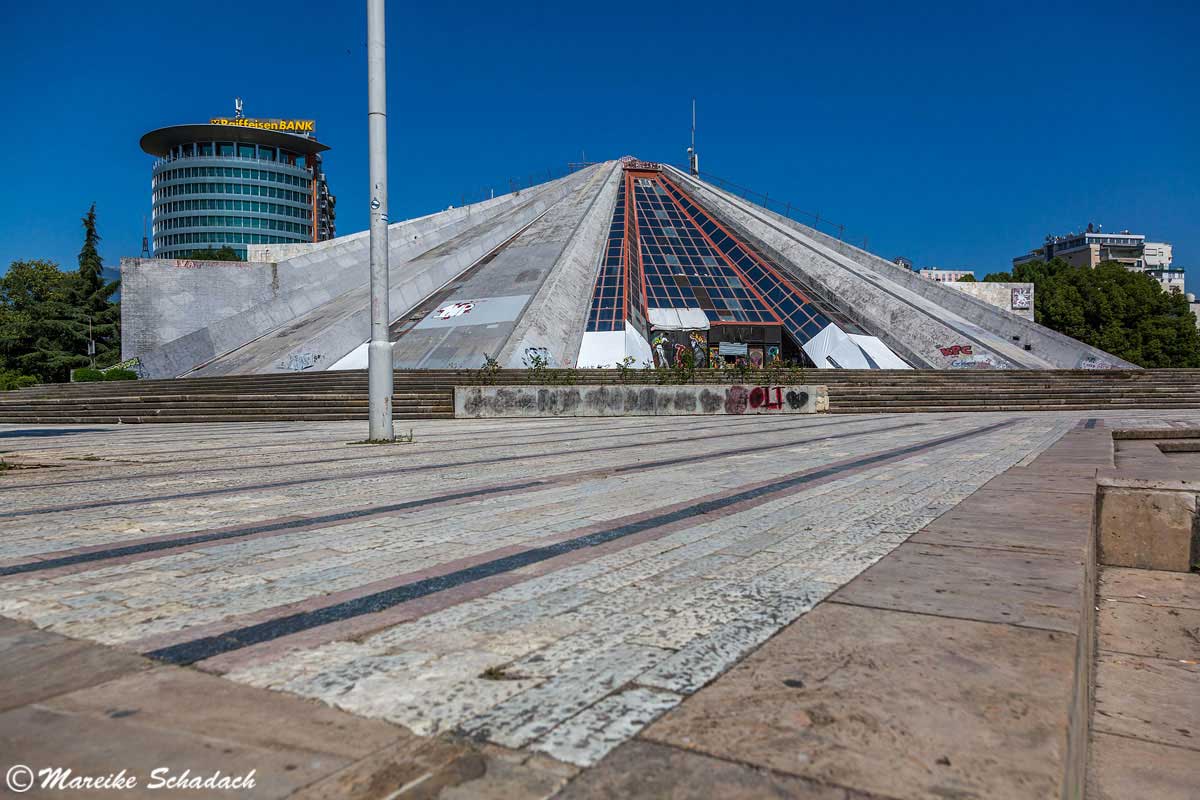

But it is not only the architecture that attracts attention. There are also the colours. Bright red, bright blue or sunny yellow. Hardly any colour was left out when the artist and then mayor Edi Rama decided in 2000 to banish the grey tristesse from the city. But he also declared war on illegal development in Tirana. According to the motto "Clean and Green", the parks were cleaned up and newly planted. His program was effective, and Tirana today looks quite modern and tidy - at least in the center.

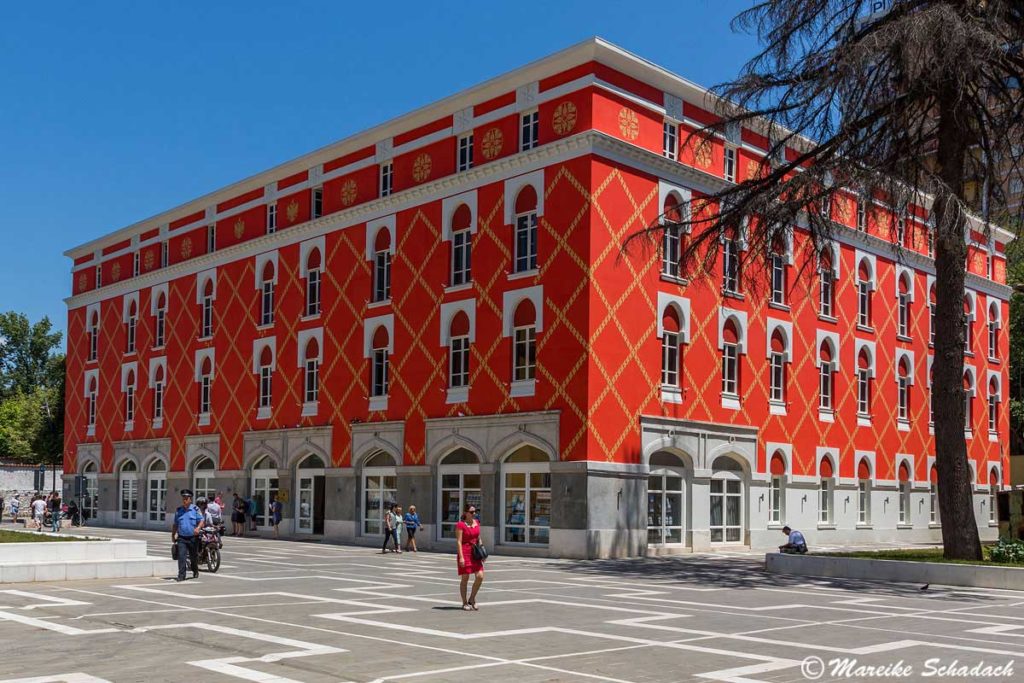
Book Recommendations for Architecture Fans
Are you as fascinated by Soviet-era architecture as I am? Then you will be thrilled by these three books*.
History in Bunk'Art 2
However, the process of coming to terms with Albania's history is more hidden. It is located under the city in the former nuclear shelter of the Ministry of the Interior. Bunk'Art 2 has been inviting visitors to learn about Albania's history since 2016. The focus is on the reappraisal of the time during the communist government. Bunk'Art 2 documents the history of the Albanian secret police from 1912 to 1991. The museum is very informative, moving and shocking at the same time. Details of the secret police's brutal actions against the Albanian population are shown for the first time. In the cool and dark atmosphere of the bunker, the victims of political persecution are given names and faces. If you want to understand Albania, then I highly recommend a visit to Bunk'Art 2.
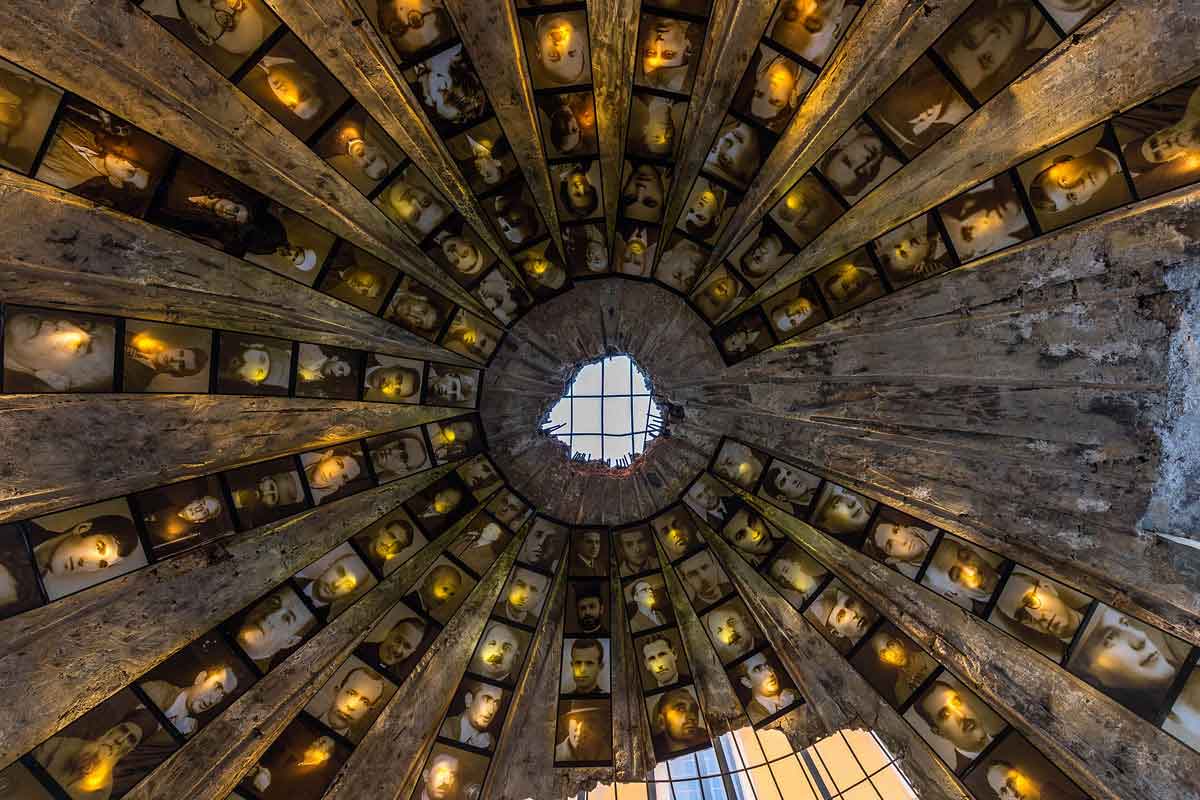
Location: Abdi Toptani, within 3 minutes walking distance from Skanderberg Square.
Opening hours: daily from 9 am to 6 pm
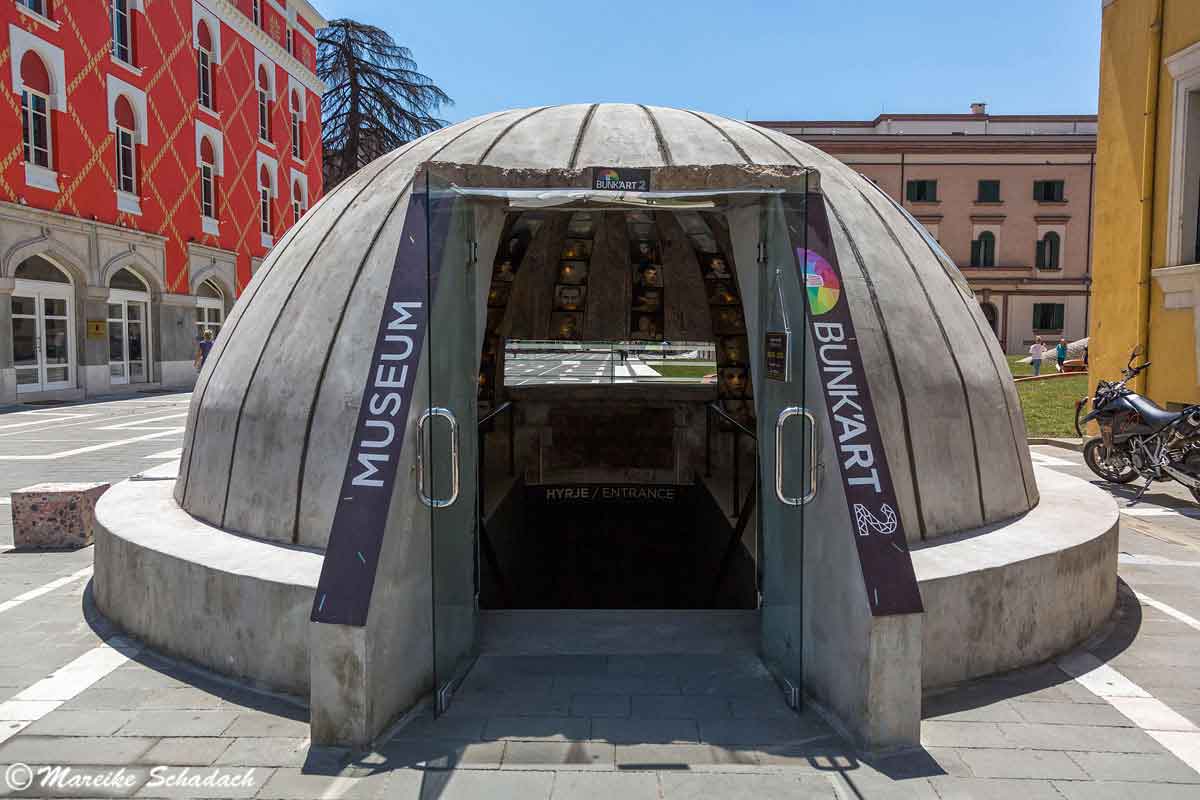
And after Bunk'Art 2? About 100 meters south is the Shetitorja Murat Toptani. The road is closed for cars and there are nice cafes and cosy restaurants. Here you can let your visit to the museum settle down.
#7 Berat - the City of 1000 Windows
With more than 2400 years of settlement history Berat is one of the oldest towns in Albania. The old craft and trade town is picturesquely situated on a hill on the river Osum. Narrow alleys, steep stairs and picturesque nooks and crannies characterize the town. The Ottoman houses from the 18th/19th century stand densely packed and line up the hill. White facades, black slate roofs and large windows offer a great panorama from the opposite side of the river. By the way, the many large windows gave Berat the nickname "City of 1000 Windows".
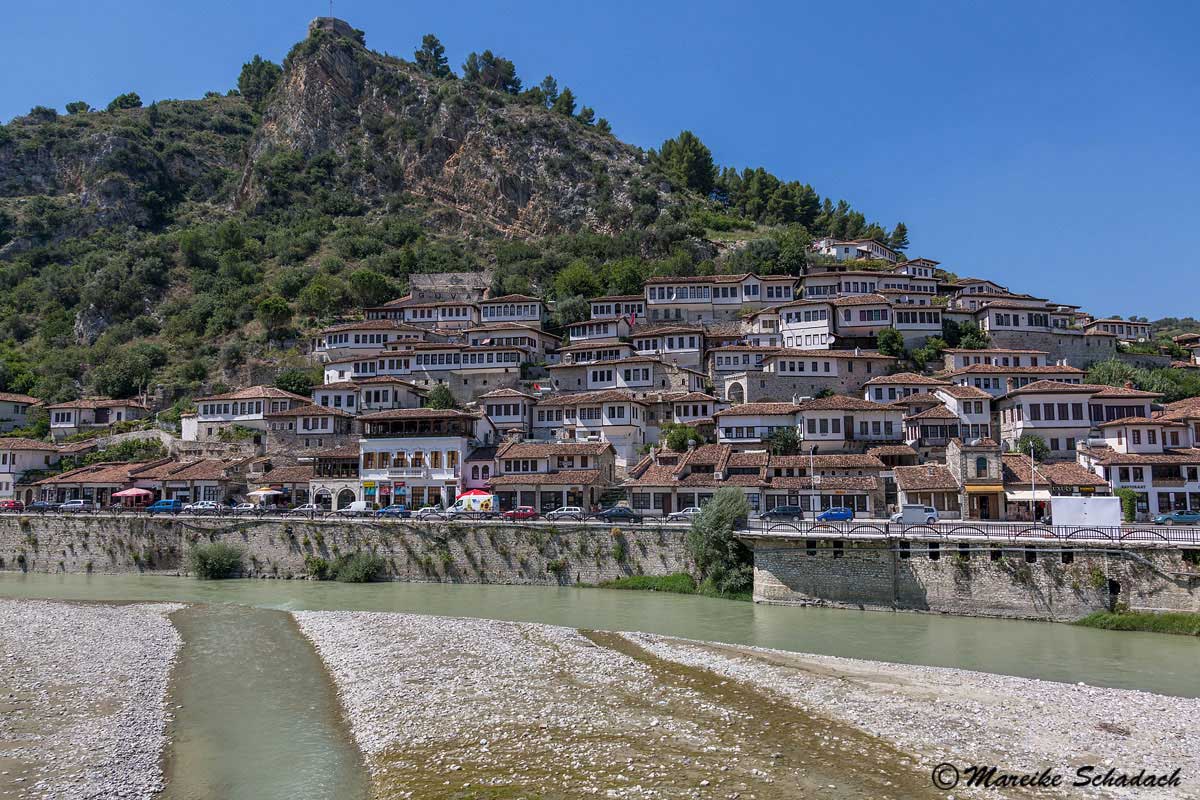
Berat is one of the most popular destinations in Albania. Since 2015 the city is listed as UNESCO World Heritage Site. Besides the Ottoman Old Town and the beautiful Trinity Church, the castle "Kalaja e Beratit" is also one of the sights. This medieval castle is also the only inhabited castle complex from Ottoman times in Albania.
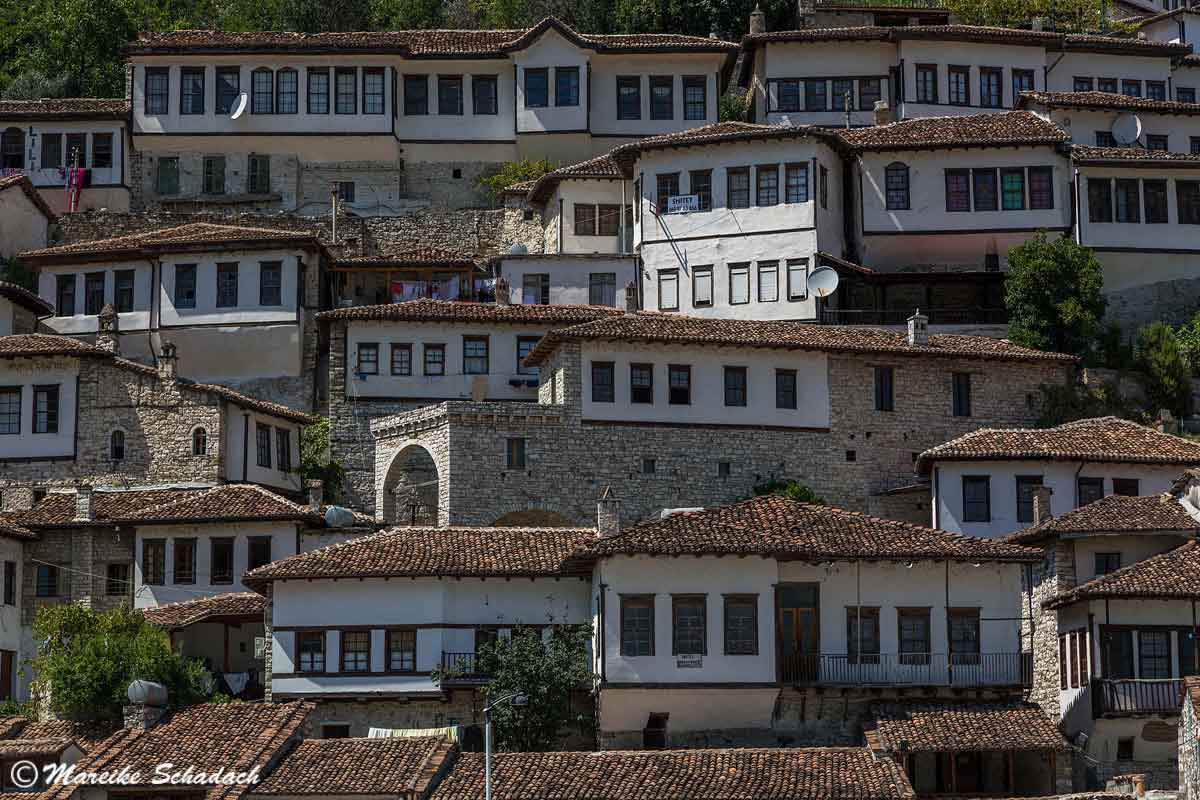
#8 Osum Canyon, Thermal Springs in Benje and Lengarica Canyon
Steep gorges in Osum Canyon and gravel roads that lead through breathtaking mountain landscapes. Relax in the warm thermal springs near the village of Bënja or do a spectacular river hike through Lengarica Canyon. Albania shows itself from its most beautiful side on this stage. And because there is so much to experience here, I have also written a separate article about Osum Canyon, the thermal springs in Benje and Lengarica Canyon .
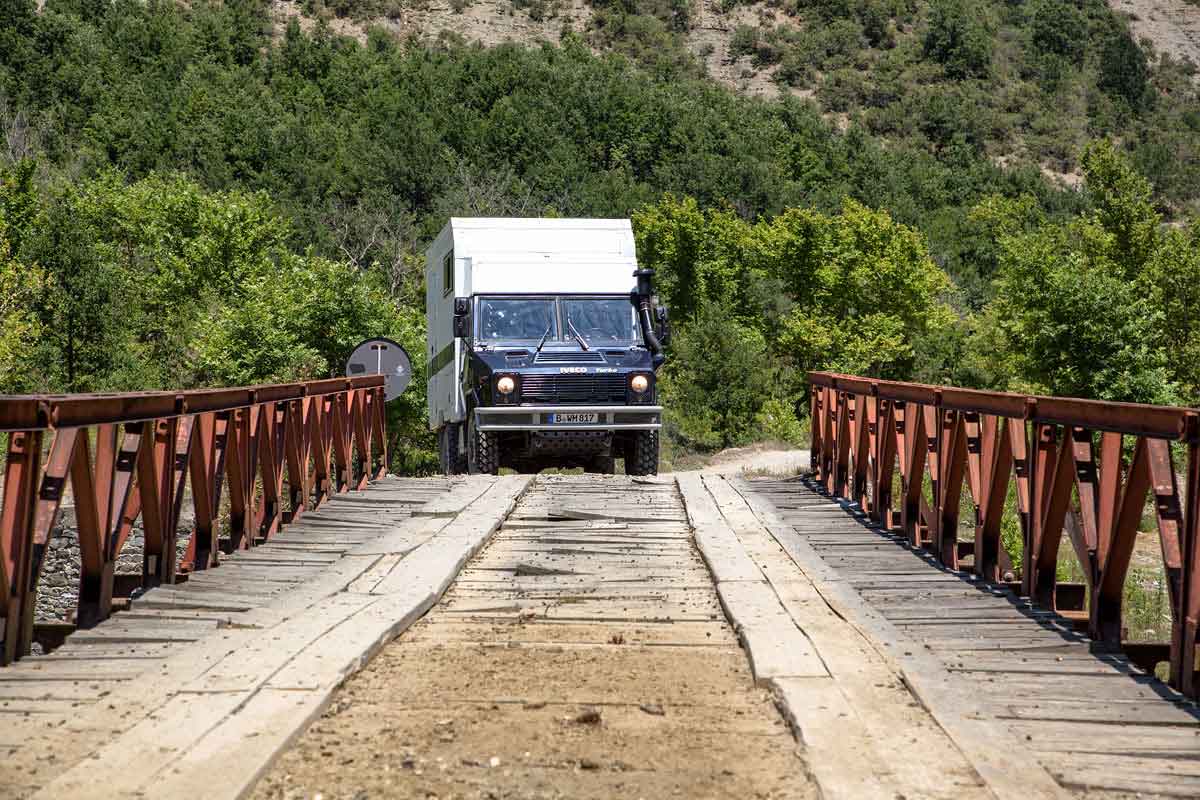
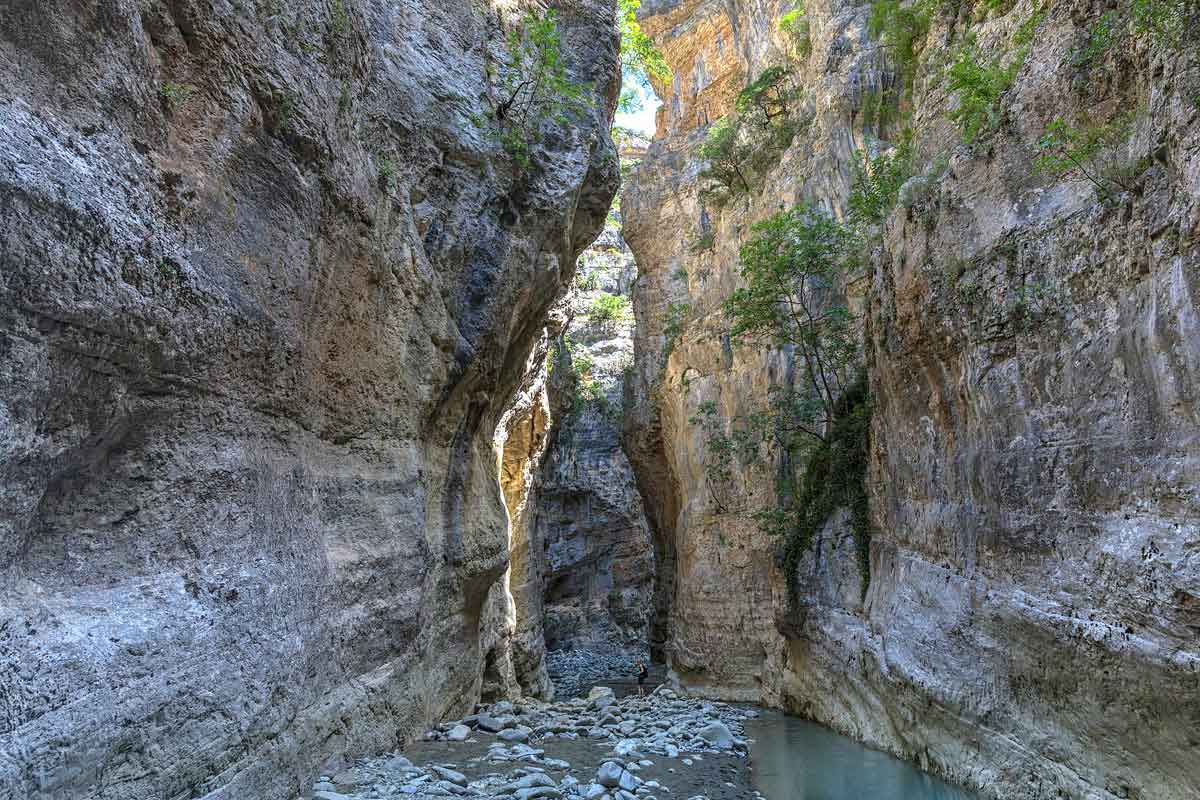
#9 Gjirokastra with its imposing fortified Houses
The houses in Gjirokastra are not comparable with anything I have seen before. Thick stone walls and small windows are supposed to protect life and limb. It were always the men who did something wrong and then entrenched themselves in the upper floors of the fortresses. For fear of the blood revenge. Fortunately, the blood revenge no longer exists ... The impressive fortresses and towers are still standing and are witnesses of a turbulent past. You can find many of these houses in the city of Gjirokastra.

Gjirokastra is located in the south of Albania and is one of the oldest cities and also an important cultural center of Albania. Already in 1961 the communist government declared Gjirokastra as a "museum city". Thus, the city escaped the radical changes that other places experienced during the communist era. Since 2005, Gjirokastra is also on the UNESCO World Heritage List.
You can also visit Gjirokastra with a guided day tour from Tirana.

On the hills of the city lie hundreds of uniquely preserved stone fortified houses, also called kulla. The plots are surrounded by high walls. One of the largest and most magnificent fortified houses in Gjirokastra is the Zekate house of the wealthy Zeko family. It was built in 1811/12 and has been rising above the town of Gjirokaster ever since. Already in 1973 it was awarded as a cultural monument. For a small fee of 1 Euro you can visit the Zekate house .

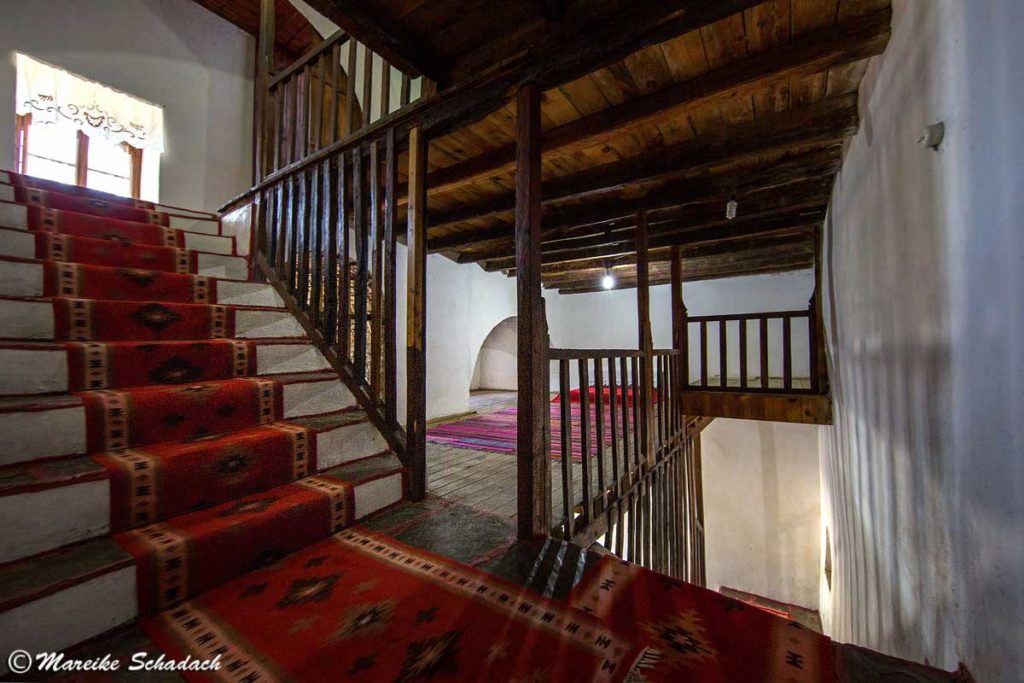
#10 In the dry Riverbed from Tepelene to Himarë
The drive from Tepelene via Kuç to Himarë was our biggest adventure in Albania and highlight number one during our road trip. And this for several reasons:
Part of the Route was not marked on any Map
The entire route from Tepelene to Himarë is about 55 kilometers long with an off-road part of about 42 kilometers (as of 2018). However, part of the track could not be found on any map. However, we had a good description of the route from the road book of the Hobo Team*. It should lead through a riverbed that is dry in summer. We tried to find out more about this exciting track and looked at the area on Google Earth. There we actually recognized a dry river and with a lot of fantasy we could imagine a route. We saved this route in our GPS and then we started.
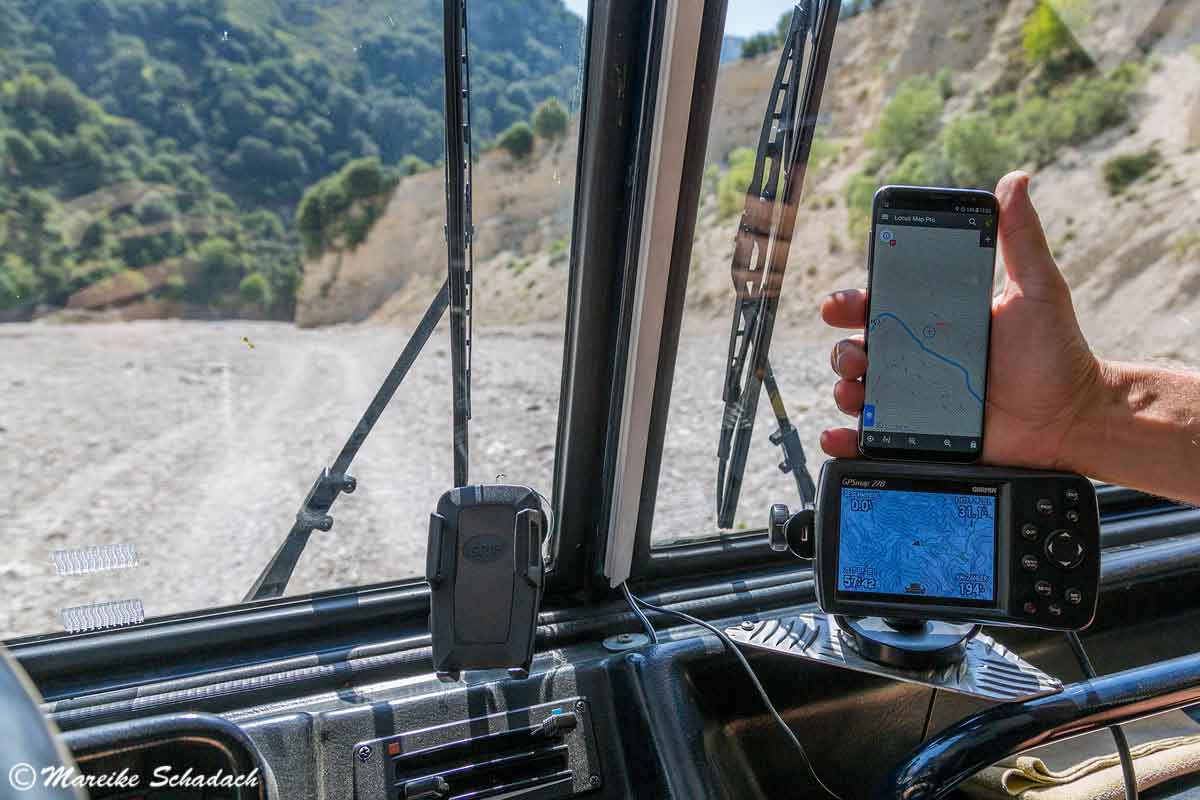
Down in the Riverbed our Four Wheel Drive failed
After we found the section from Tepelene to the turnoff to the track to Kuç (there was actually a sign at the turnoff), we went downhill. Not only that the gravel road led us downhill into the river valley. Also with our vehicle technology it went downhill. As soon as we reached the bottom, we noticed that our four-wheel drive had broken down! And in front of us were several kilometres of dried out riverbed with more or less loose gravel and numerous fords! What a fright! But thank god, one of us knew a lot about technology. Till repaired the four-wheel drive provisionally. But from now on we could only switch it on under the car, directly at the transfer case. Suddenly a gear lever next to the driver's seat appears in a completely different light - pure luxury!

Fords, Fords and again Fords - for all who never get enough
The riverbed was not as dry as one would imagine a dry riverbed to be. About halfway through the stretch - our four-wheel drive was now permanently on during the runway drive - it got wet. The first ford was most exciting. Then came another one. And then many more...It was mega fun! All in all there must have been ten fords that we had to cross - no, we were allowed to. On the photos they don't look that spectacular, but believe me, they were. And they were THE highlight of our road trip in Albania!


During the route only one vehicle and two riders came towards us. The first rider greeted us rather timidly. The second rider - a female rider, to be precise - waved cheerfully and turned her thumbs up... perhaps because I was sitting at the steering wheel as a woman. Hard to believe, but for a woman driving a car in the rural areas of Albania not so unusual.
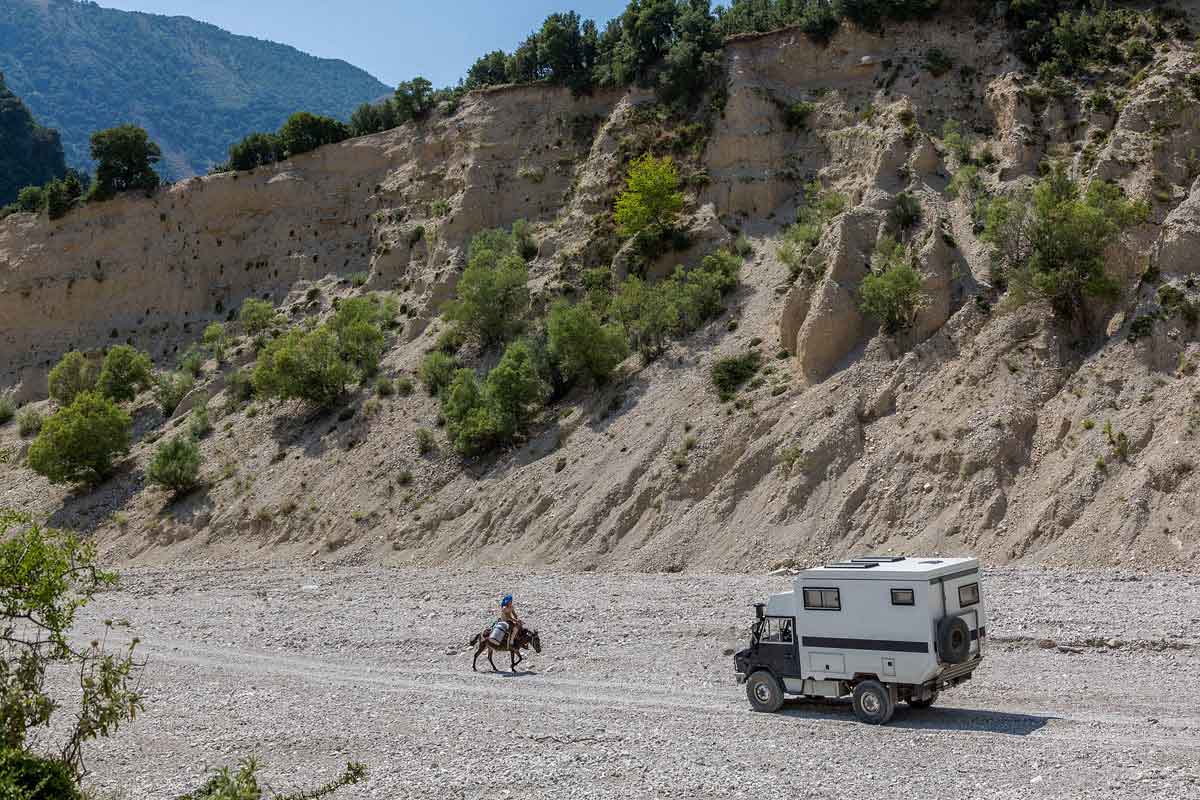
The landscape of the Kurvelesh region is the most beautiful mountainous region of Albania besides the Albanian Alps. The plateau is criss-crossed by mountain ranges and river valleys and is difficult to access. So far, the naturalness of the region has been largely preserved. But new tourist areas are to be developed and it may not be long before the first sections are asphalted.
Tip: the riverbed is a perfect place to stay overnight. There are 1001 nice pitches and you are almost all alonehere. Wildly romantic! As soon as the river bed is followed by an uphill section, the possible pitches for the night become less and less.
#11 Albania's Coast - a little bit of everything
Albania's coast is long and varied. There are lonely bays and steep cliffs, overpopulated bathing and party beaches, wild river deltas and national parks. There is something for every taste.
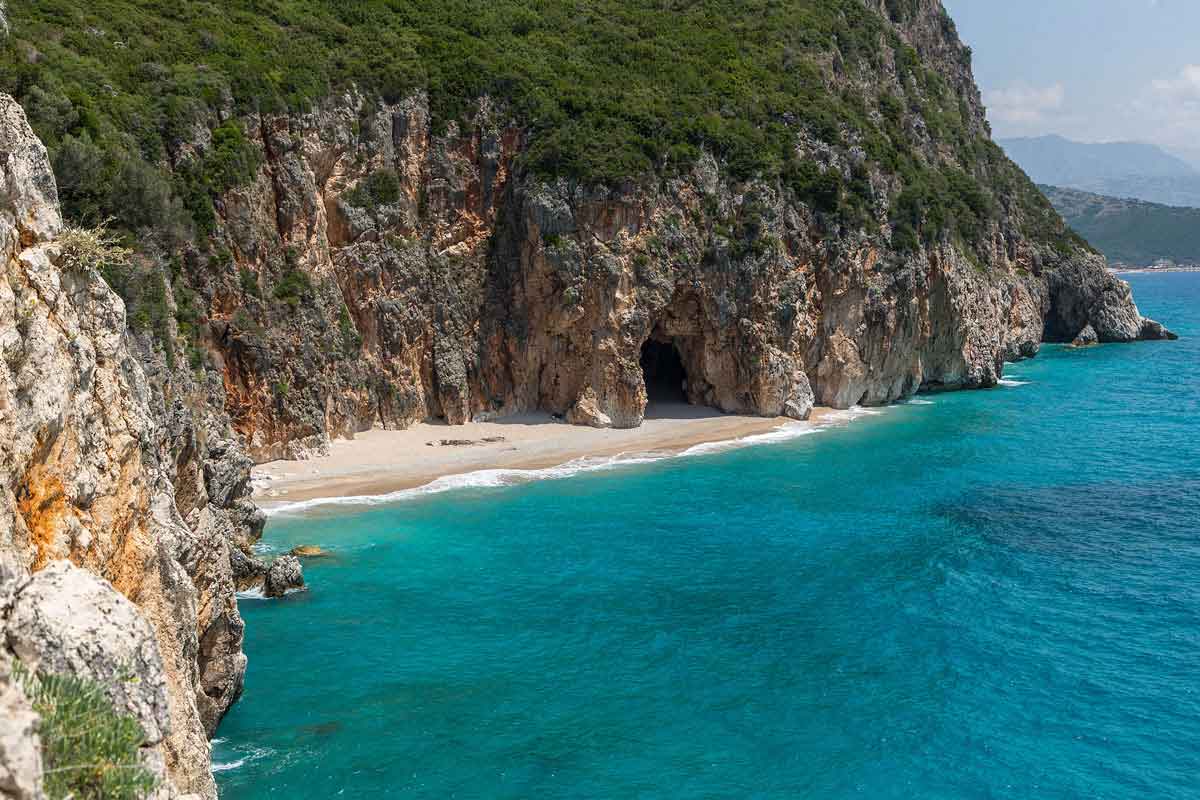
On our road trip we only got to know single beach sections in the south of Albania. Because after we came from the lonely inland to the coast, it was simply too crowded for us there. That's high season!

Even though the coast of Albania was no highlight for us during our road trip, I still have a tip for you:
The beach in Gjipe: The beach in Gjipe: the small beach can only be reached via a rough gravel road or by boat. It lies idyllically framed in a canyon. The beach invites you to swim and is also the starting point for hikes up the valley. On the beach itself there is a bar where you can get simple snacks or a drink. There is also a small camping site. If you want to drive the route with your 4x4, you should have a good ground clearance and not be afraid to reverse on a steep slope. We finally decided to park on the big parking lot above the beach. Here we could also stay overnight for a small fee. We reached the beach after a 30 minutes walk.

#12 Saranda and Butrint
Coastal Town Saranda
The small coastal town of Saranda is located in the very south of Albania and is only a stone's throw away from the Greek island of Corfu. Saranda was developed as a seaside resort from the 1950s onwards and is now visited by about 500,000 guests every year. There is a beach promenade and numerous restaurants and hotels. And it is quite busy in the main season. Many day guests also come by boat from Corfu. Because in Saranda you can not only swim in the Ionian Sea, but also visit one of the most popular highlights in Albania: the approximately 3000 year old ruined city of Butrint.

Ruins of Butrint
Strategically located on a peninsula, it is home to numerous ruins from ancient times. Particularly well preserved is a semi-circular theatre from the 3rd century BC. Since 1992, the ruins of Butrint have been listed as a UNESCO World Heritage Site.

Directions to get there: The ruins are located about 20 kilometers south of Saranda and are easily accessible by bus or own car. If you arrive early, there is also a parking lot near the entrance. For all others there is another large parking lot about 1.4 kilometers away, which is also a good place to park for the night.
Worth seeing is also the national park that was established around the ruins. The park is especially important for amphibians, reptiles and birds.
By the way, you can also visit Butrint on a guided day tour* from Tirana.

Syri i Kaltër Karst Spring (Blue Eye)
Another attraction near Saranda is the karst spring Syri i Kaltër (Blue Eye). Here ice-cold deep water gushes upwards. Those who are particularly brave dare to jump into the cold water. However, if you prefer a quieter pace, you can enjoy a drink in one of the restaurants or go for a walk. The parking spaces here are also often used as parking spaces for the night. The access to Syri i Kaltër is via a bridge, where you have to pay a small entrance fee.
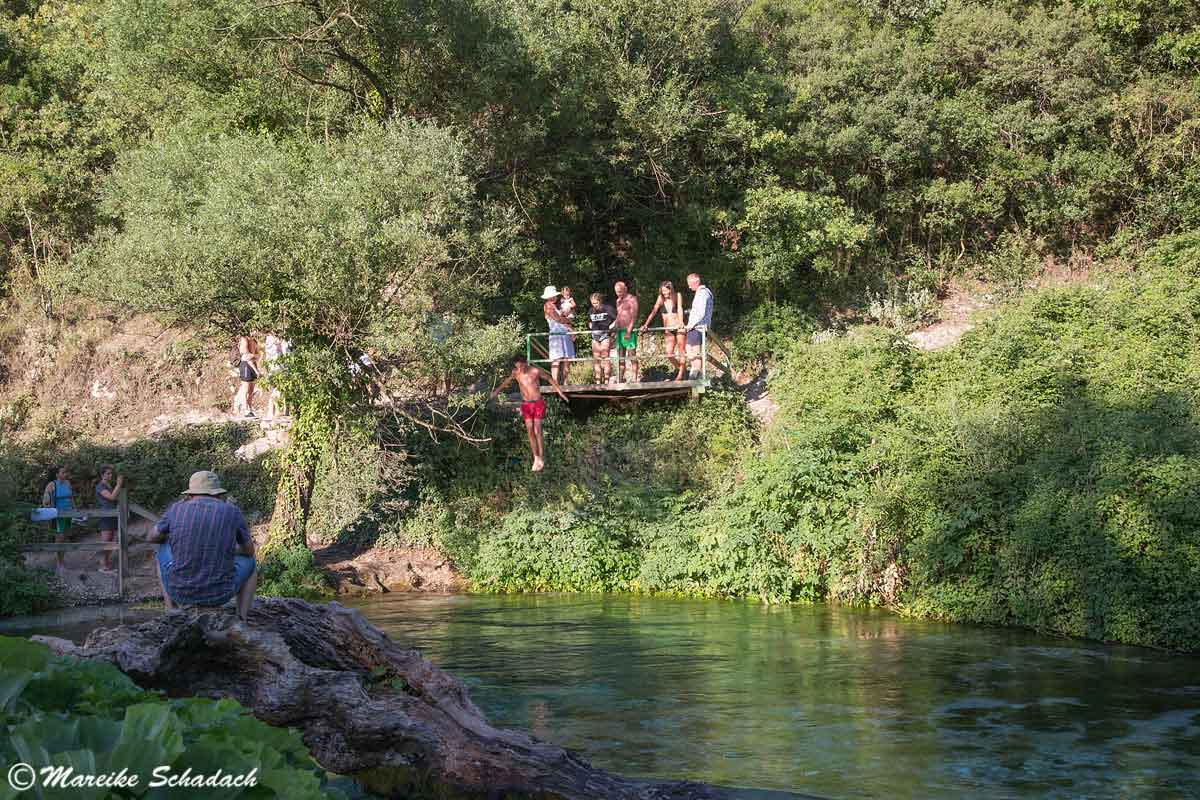
#13 Lost Places
Did I tell you that I love Lost Places? I am magically drawn to the morbid charm of abandoned buildings and industrial ruins. And Albania is an absolute paradise in this respect! Many Lost Places are relicts from the communist era. Supported by the socialist planned economy, numerous mines and factories were built during Enver Hoxha's time in power. Many of them are now standing still. We saw an abandoned munitions factory, the Hoxha pyramid in Tirana, an old oil refinery and even oil pumps. But we were not quite sure whether they were still in operation or not. Oil was on the ground around the oil pump and ran over a small trickle along the road. At the edge of the road were rusty oil tanks. They looked abandoned, but some of them were still filled and probably still in use.
Here are a few Lost Places highlights, which we discovered during our road trip in Albania:


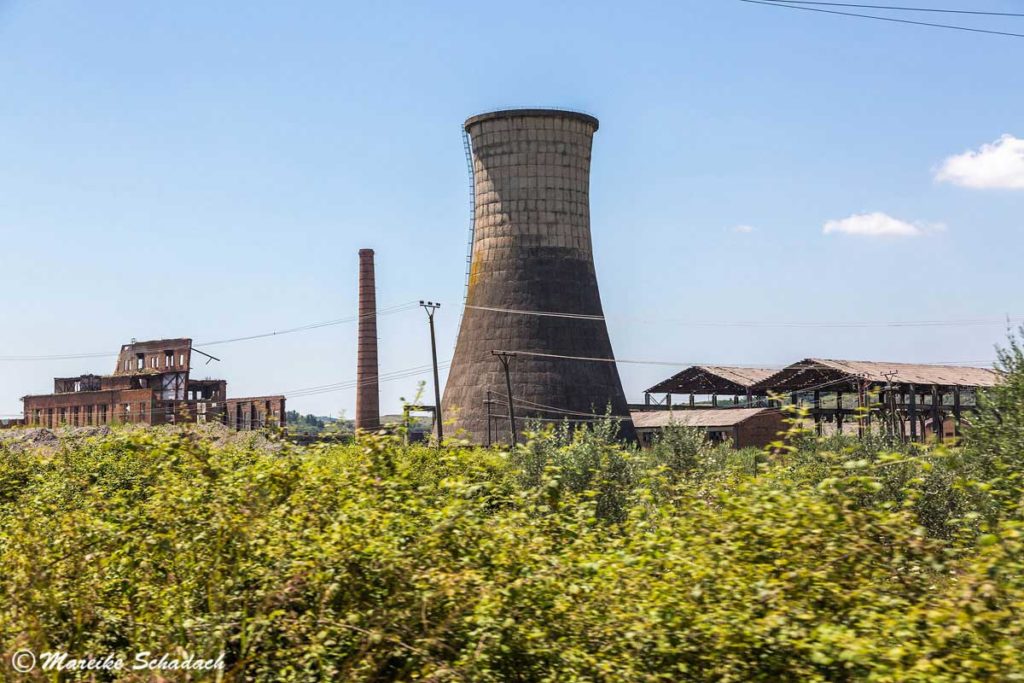

#14 Bunker
Countless bunkers remind us today of the once socialist Albania under Enver Hoxha. Most of them are small mushroom-shaped bunkers, which often stand together in groups of three. They characterize the landscape. Most were built between 1972 and 1984. Their number is estimated at about 200,000. Exactly how many there were, however, is unclear. And how many of them are still left.

After leaving the Warsaw Pact in 1968, Enver Hoxha prepared Albania for the invasion of enemy troops. A place in a bunker was therefore to be created for every Albanian. From here the country was to be defended against the invaders in the partisan fight. The bunker construction swallowed a huge amount of money and concrete at that time and put an enormous burden on the weak economy of the country.


Most of the bunkers were built in the border regions, at the sea or at strategically important points. Three different types of construction are most common:
- Small pillbox bunkers for one person, resembling concrete mushrooms. They were often built in groups of three and were connected by a passageway.
- Small bunkers for four persons
- Larger bunkers for artillery guns
Besides, there's also:
- Submarine Bunker
- Observation stands on the beach
- Large underground command bunkers
- Underground aircraft caverns
- Caverns and ammunition depots
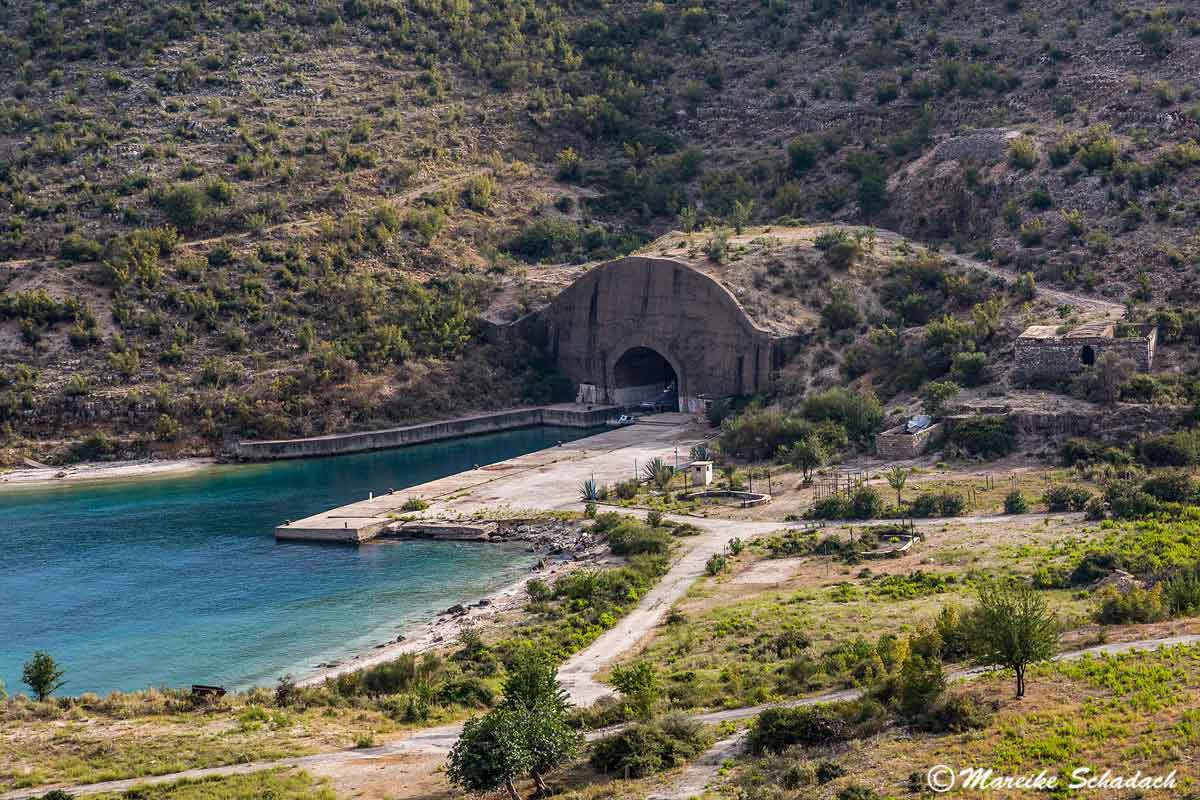
Many bunkers are now overgrown, slopes have fallen or sunken. Some have also been dismantled or found a new use. Mostly however unfortunately as toilet or garbage container. But some of them are used by farmers for example as material storage or stable. In cities bunkers have been converted into cafés, restaurants, museums, shops or even residential buildings. A nice example of this is the Bunk'Art Museum in Tirana.
#15 Monuments from the Communist Era
In Albania, several hundred monuments, so-called lapidars, still remind us of the communist era. They are mostly vertical, abstract monuments made of concrete. They are often decorated with communist symbols such as the red star. Some have also been supplemented by reliefs or statues. They are considered works of art of Socialist Realism. For me they were one of the highlights of our road trip to Albania.
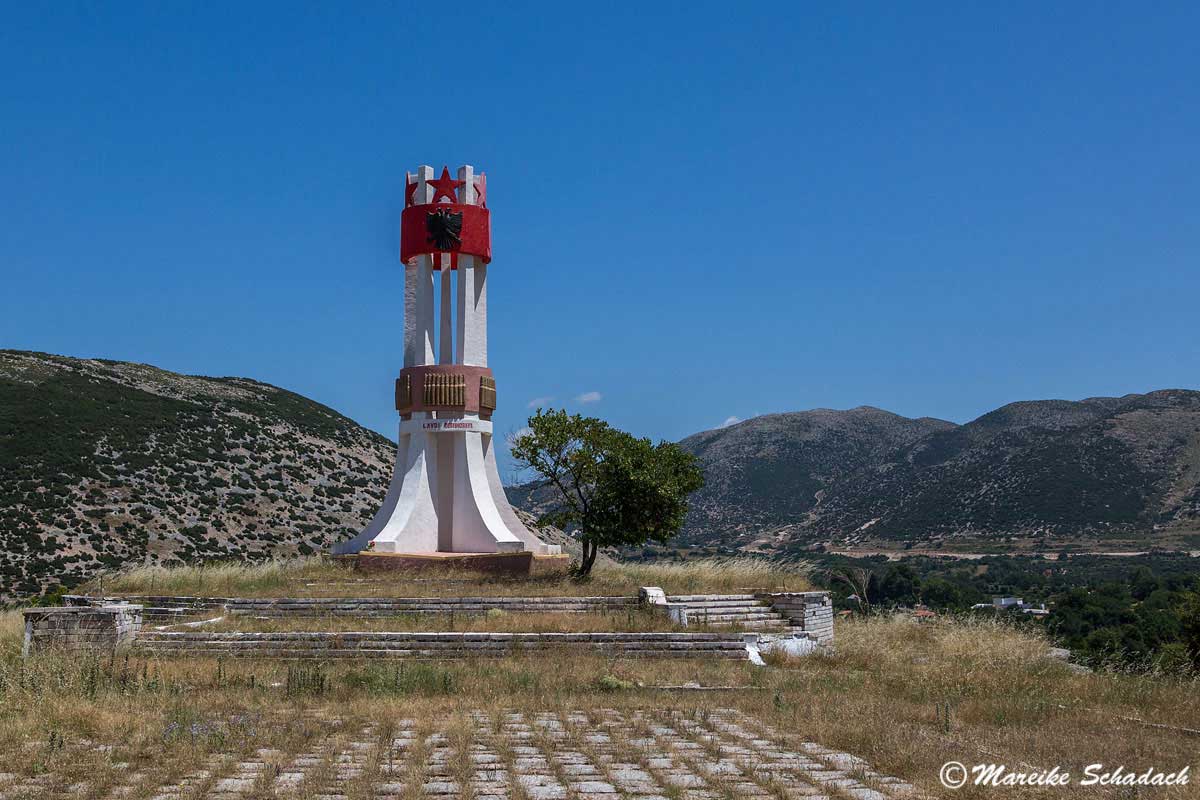
The lapidars were mostly erected to commemorate martyrs of the Albanian partisan fight in the Second World War. For this purpose, prominent, highly visible or historically significant locations were chosen. You can see many lapidars by the roadside. Because in every town and village the regime built those monuments. This made the communist party omnipresent.

But from the once 800 to 1000 lapidars, today, only approximately 680 are supposed to be preserved. Some of them have been decayed, destroyed, transformed or moved. But some have also been restored and even received a new coat of paint. I consider the lapidars to be a unique cultural asset and therefore I photographed them with enthusiasm. Here you can see a small selection:

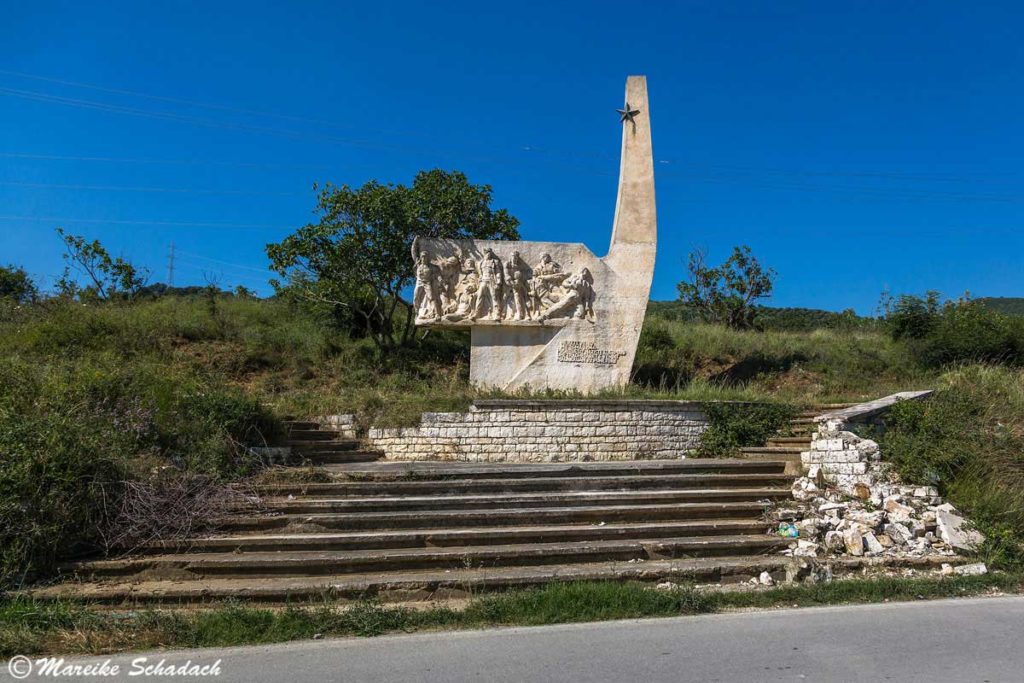
Besides the Lapidars, you can also find other monuments in Albania, which were built during the time of the socialist People's Republic. These include bronze statues, larger socialist monuments and martyr cemeteries.
Tip: The Albanian Lapidary Survey Project is dedicated to the inventory and documentation of all remaining lapidars. On their website you can see numerous photos including location information. The catalogue is supplemented by a bilingual e-book (English/Albanian), which you can download for free as a PDF file from Punctum Books, Brooklyn (donations are welcome).
General Tips for your Roadtrip in Albania
Animals on the Roads
As soon as we had crossed the border, we almost ran over a turtle. We were expecting cows and sheep. But turtles? No way. But they don't seem so rare, because we almost ran over another one later. I would have been inconsolable! So open your eyes and pay attention. And best not to drive in the dark, because then you see the animals even worse.

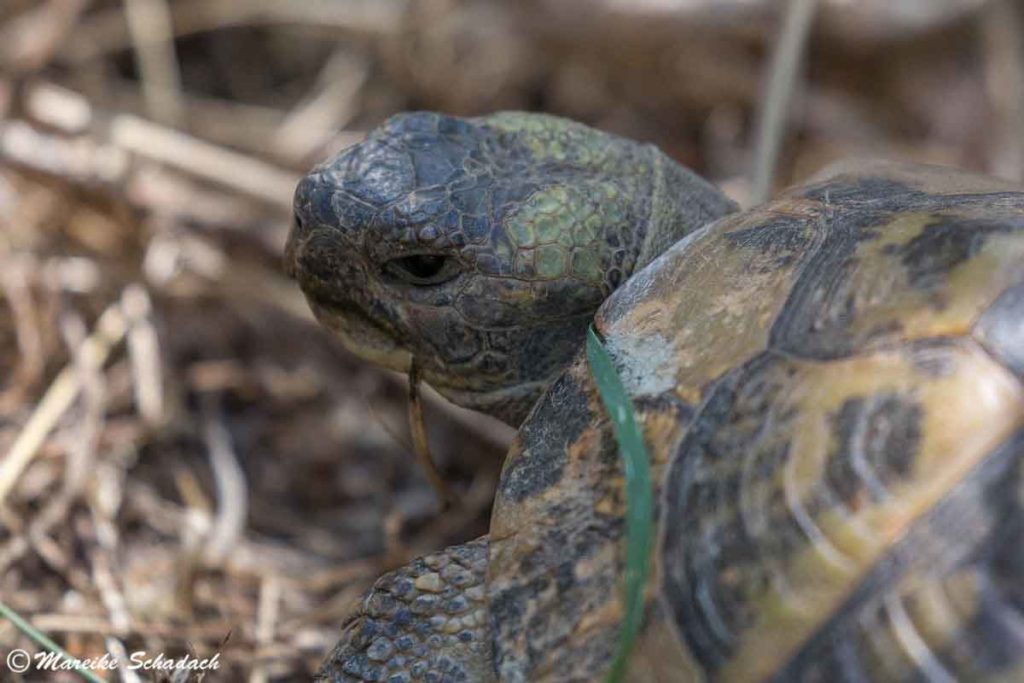
Uphill, downhill and around the Bend
The roads in Albania are rarely flat and rarely go straight for a long distance. This applies not only to gravel roads but also to asphalt roads. Some stretches along the coast were so steep downhill that we had to drive in first gear with reduction.
This brought our travel planning a little bit mixed up. Because of the roads we drove much slower. That meant that in the end we spent much more time driving than planned. That wasn't bad now, we could take turns and we enjoyed driving through the landscape. A real road trip!
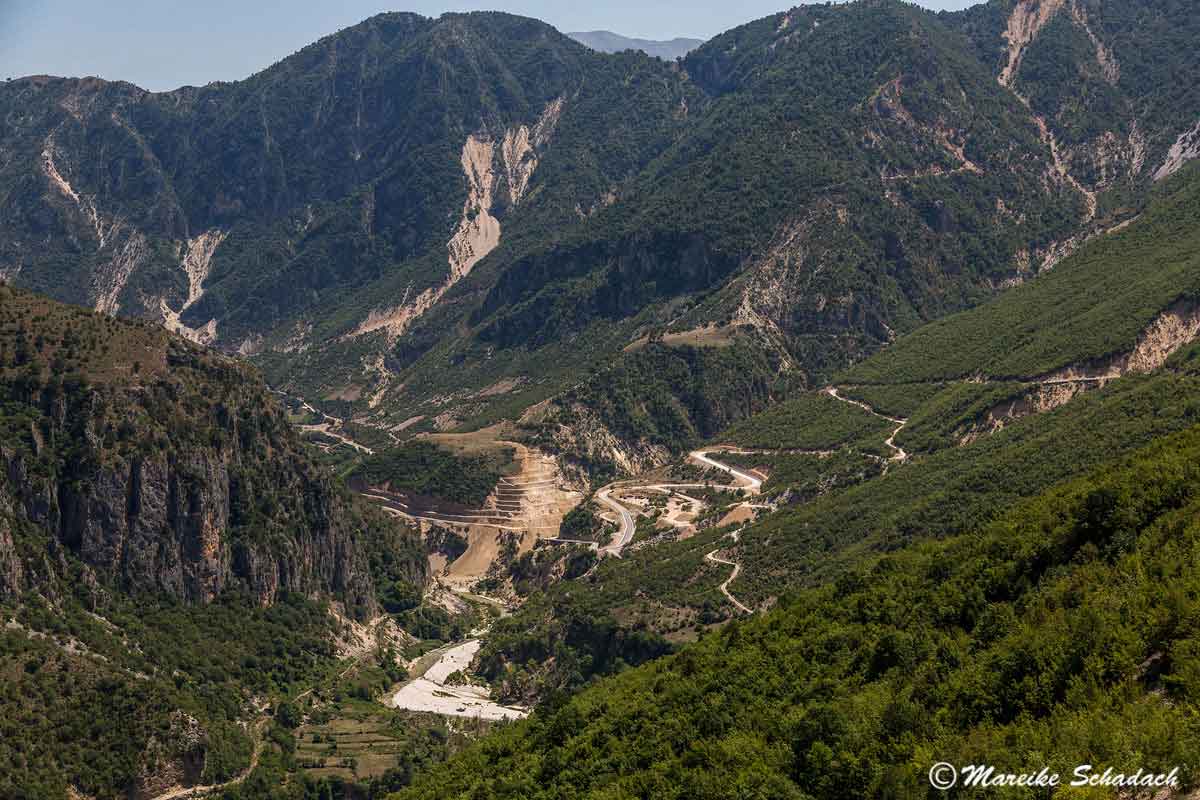
Pitches for the Night
Albania is a paradise for campers. Because the so-called "wild camping" is allowed and quite normal in Albania. No matter whether with camper or with tent. We were always greeted friendly by passing cars (which can happen even on the remote slopes). Sometimes we were even asked if everything was ok or if we needed help. So you can have a chat even in the most remote places.
The "wild camping" will of course only be accepted as long as all campers follow certain rules. That means:
- Don't leave garbage or any other mess!
- Do not destroy nature with your tires! Respect nature reserves and national parks and stay here on the official parking lots.
- Keep some distance to settlements / houses.
- Be careful with open fire - only at suitable places, or better avoid it.
- Don't park on cultivated land
During our road trip in Albania almost every pitch for the night was a highlight in itself. Here are a few impressions. Where exactly our pitches were, you can see in the map at the very beginning of my article.

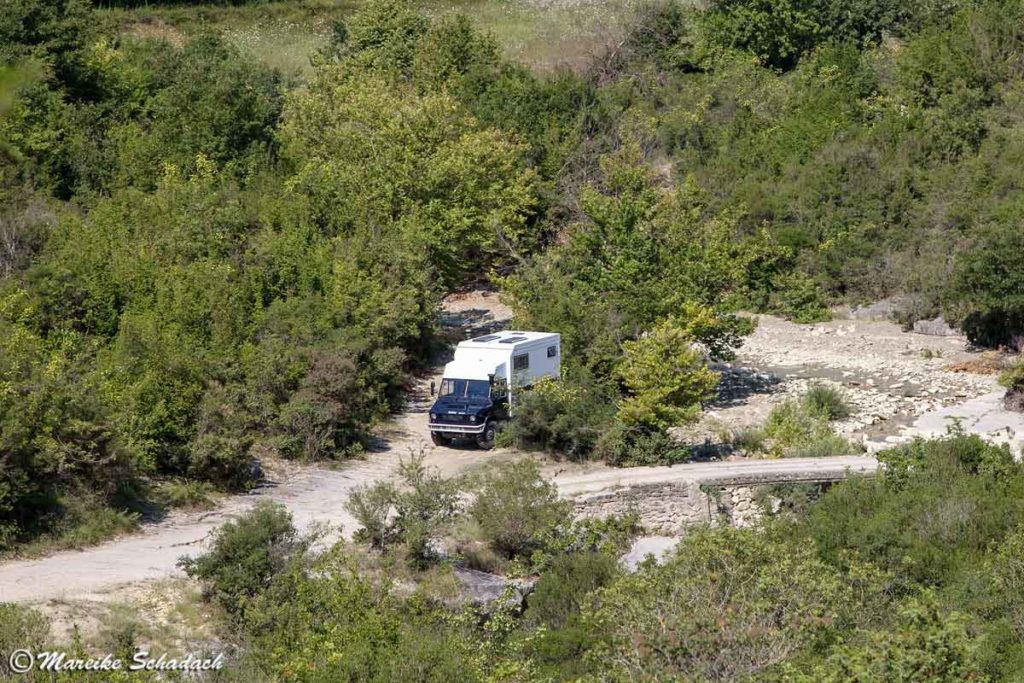



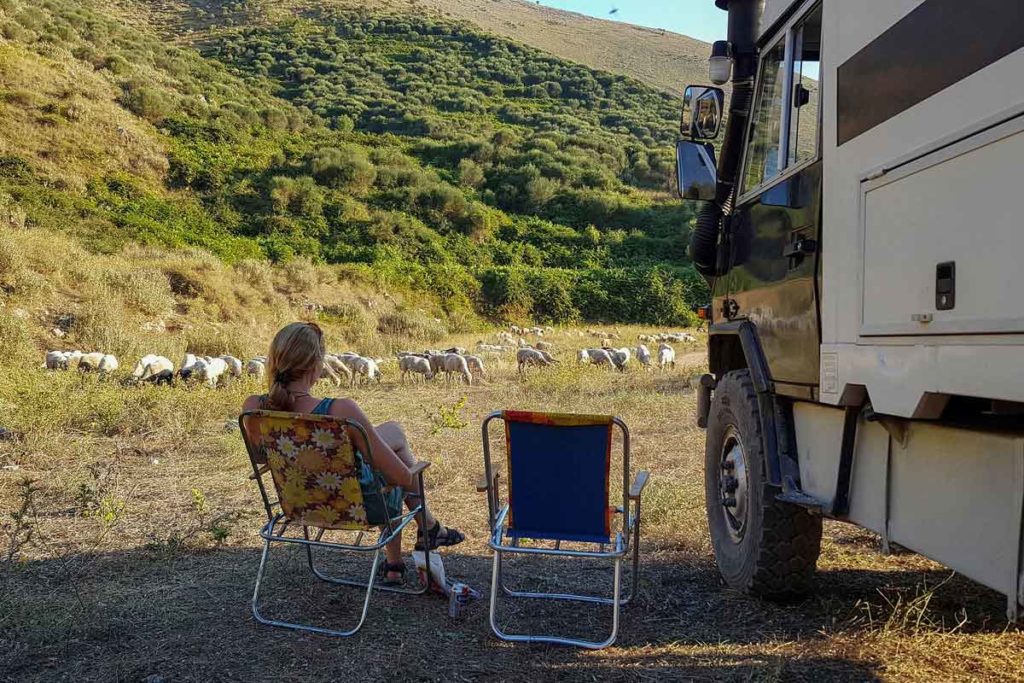
Of course there are also camping sites with the usual facilities or pitches on hotel car parks in the cities, such as in Tirana or Saranda. The campsite in Koman was really nice, located directly at the water.
You need camping equipment? Maybe a GPS or new camping chairs? Take a look at Globetrotter*.

Refuelling
We have researched the diesel prices on the Internet beforehand. The fuel was cheaper in Macedonia than in Albania, so we refuelled there. Our 300 liter tank gave us the necessary leeway. But in general the following applies to Albania: There is unleaded petrol, super and diesel. You will probably get the better quality at bigger petrol stations, where you can pay also by card. The petrol station network is quite dense. But if you drive to remote areas, you should check the fueling possibilities and fill up your tank again. Always take into account the fact that you might not be able to drive all the way to the end of an off-road track and have to turn around. The fuel should still be enough for that as well.
Drinking Water
In the Albanian Alps there are numerous natural springs from which you can drink directly. Here we also filled up our water tank again. Alternatively you can fill up your water tank at the petrol stations. Since our motorhome has a built-in water filter, we have been able to drink the water from our tank. However, we preferred not to drink unfiltered tap water.

Shopping
In the cities there are supermarkets as we know them and in the villages there are corner shops as we used to know them. For fruit, vegetables and honey you can also often find stands at the roadside. During our tour in Albania we always filled up our supplies in corner shops or at street stands.
Waste water
We have collected our washing waste water in a mobile canister. For our chemical toilet we also have a typical toilet tank. Both we could dispose of in the sanitary facilities provided on campsites. This also worked when we were no guests and just asked friendly. Whenever there was a café or shop there, we ordered or bought something there.
Garbage
Many parking lots are unfortunately, unfortunately littered in Albania. Often we went around with the garbage bag and cleaned up. For the garbage disposal there are containers at the roadsides in populated areas. Unfortunately there was no waste separation in summer 2018.
Toll in Albania
Since late summer 2018, Albania has also a toll system in place. So far, however, only for the "Rruga e Kombit", the A1 motorway from the coast to Kosovo. Prices: 2.50 Euro for motorized two-wheelers; 5 Euro for cars; 11 to 17 Euro for motor homes depending on size.

Traffic Rules
In addition to an EU driving licence and the vehicle registration document, you also need the green insurance card. If you are not the owner of the vehicle, you will also need a power of attorney from the owner, a copy of the vehicle registration document and a copy of the owner's passport.
Furthermore applies:
- Obligation to wear seat belts
- Mobile phone ban
- Zero alcohol limit!
- The headlights must be switched on even during the day.
- Speed limits: 40 km/h in town, 80 or 90 km/h depending on signs. 110 km/h on the motorway.
Roadbooks - Travel Guide - Road Map (sorry, the books here are only in german language)
Albanien “Offroad-Guide”: ausgewählte Strecken für Abenteurer von Martina Kaspar
Absolutely indispensable for us was the Albania "Offroad-Guide" from the Hobo-Team. Because here the Hobo-Team presents the most beautiful routes for adventurous offroaders. Included are twenty long tours described and illustrated in detail and eleven detours to smaller destinations worth seeing. There is also information on the difficulty of the route so that you can judge whether the route is suitable for you and your vehicle. With lots of additional information, the Hobo Team makes you want to discover the country.
GPS-Offroad Travel Guide Island from Sabine and Burkhard Koch
The off-road travel guide Albania von den Kochs describes 26 off-road routes. For each route a degree of difficulty is given, which makes it easier to make one's own assessment in connection with the vehicle class. The Kochs have given the routes a rating in the form of stars, in which the driving fun, the landscape and the experience value are incorporated. There are also tips and tricks for off-road driving and further information about Albania.
Travel Know-How Travel Guide Albania by Meike Gutzweiler
With the Albania travel guide from Reise Know-How you are perfectly prepared for your discovery tour in Albania. In addition to many practical tips, there is just as much background information on the country and its people. The travel guide contains tips for city walks and hikes as well as supplementary city maps and general maps.
Albania, Road Map 1:150.000 by Freytag & Berndt
In addition to our GPS and mobile phone maps we had a classic car map made of paper with us. And - despite all modern technical achievements - we really enjoyed using it. And you can draw in the driven route soooooo beautifully by hand! This makes the road trip even more enjoyable!
Have you ever been on a road trip in Albania? How did you like it and what were your highlights? Do you have any questions about my article? If yes, then write me a comment!
Do you want to know when there are new articles on my blog? Then follow me on Facebook, Pinterest or Instagram. I would also be very happy if you share my article with your friends.
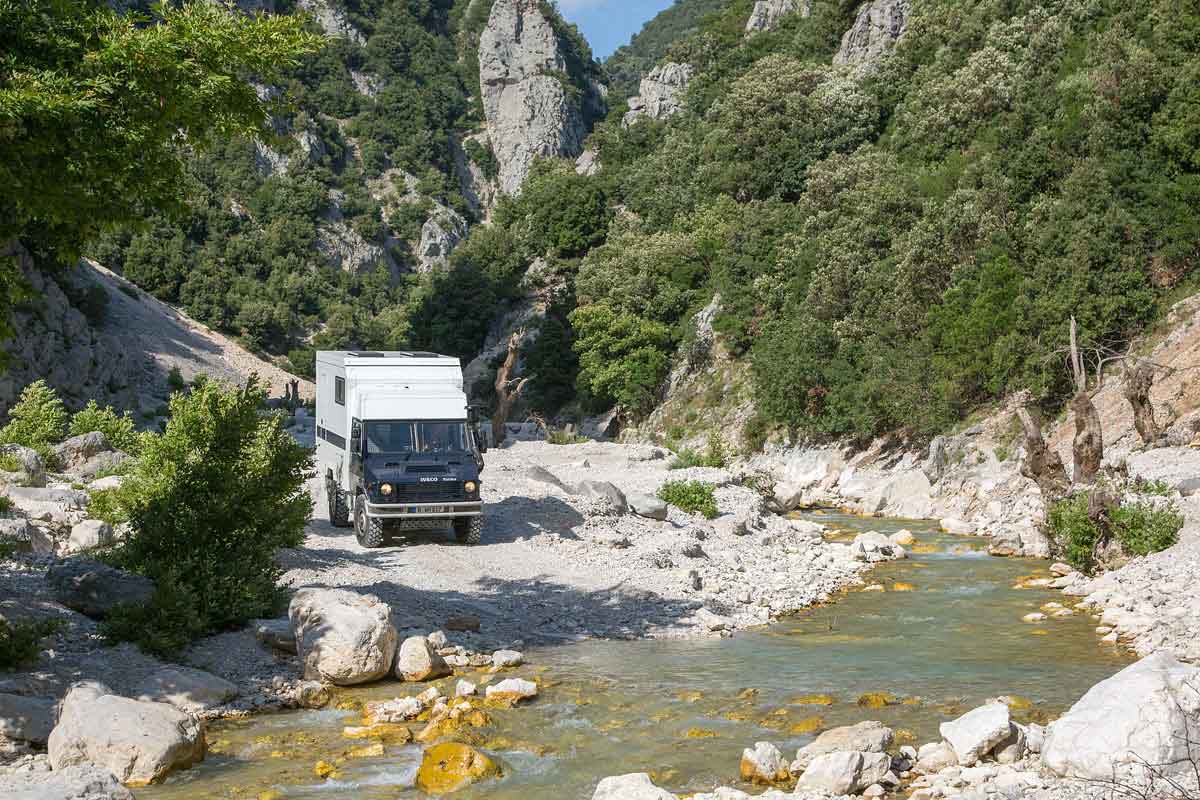










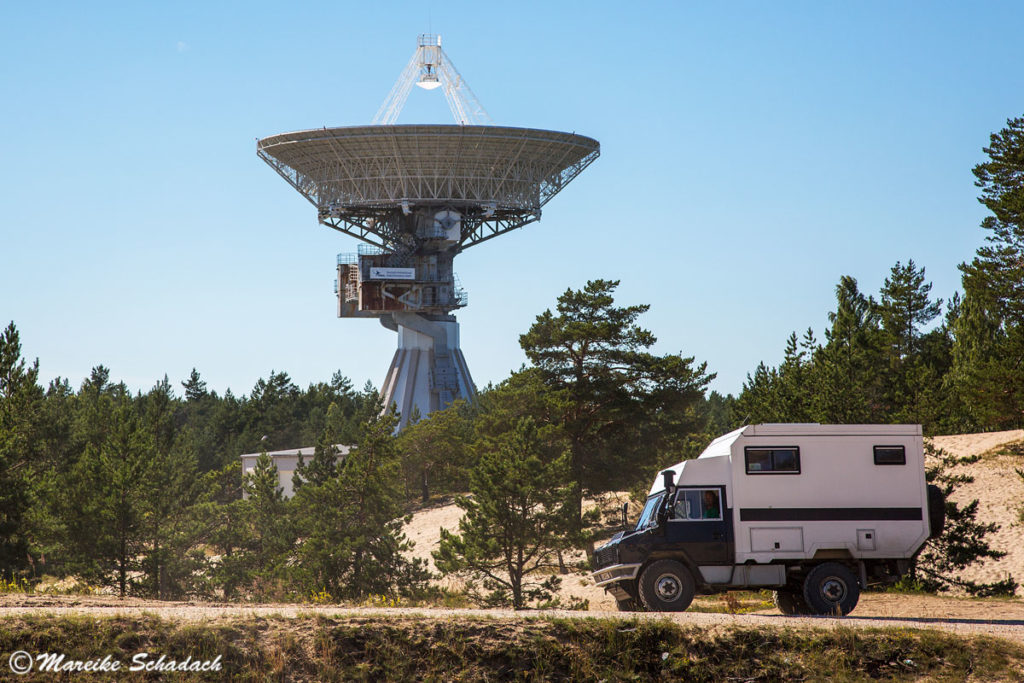
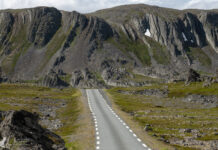
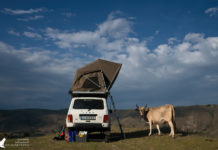

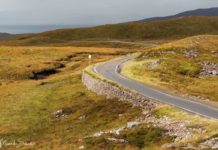

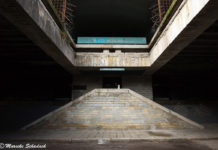


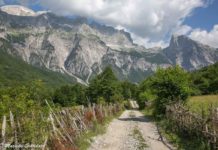
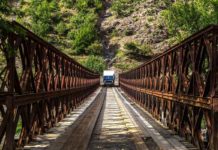
Hallo ich bin der Norbert aus Nähe Cham im Bay.Wald
Habt ihr eueren Iveco noch ?
Ich hab auch einen WM und möchte ihn fitmachen für eine große Reise nach Indien und Mongolei.
Mir gefällt euere Kabine sehr gut und bin am Überlegen ob ich auch so was aufbaue.
Könntet ihr mir Fotos zukommen lassen von dem Innenausbau und wie seid ihr zufrieden mit der Kabine?
Wieso das aufstelldach die ist doch groß genug für 2 Personen?
Gerne würde ich mal mit euch Telefonieren meine Teln. 0174 7416623 hab auch Watsapp für Bilder
Mit freundlichen Grüßen Norbert
Hallo Norbert,
Wow, da hast du ja eine tolle Tour vor dir. Das wird bestimmt ganz klasse mit dem WM.
Wir haben unseren damals so wie er ist gekauft. Das Aufstelldach war schon drauf vom Vorbesitzer, der mit Frau und zwei Kindern gereist ist. Für zwei Personen reicht es natürlich ohne Aufstelldach. Die Kabine ist sehr gut durchdacht und bietet erstaunlich viel Stauraum. Das hat der Vorbesitzer alles gemacht, wir haben nur noch Kleinigkeiten angepasst.
Ich hab den Iveco nicht mehr und kann dir leider auch keine weiteren Fotos zuschicken, da ich gar nicht mehr habe. Die Innenraumfotos, die ich habe, findest du auf der Seite, wo ich “Arwak” vorstelle, da ist auch eine Zeichnung der Einbauten, vielleicht hilft dies ja ein bisschen. https://fernwehmotive.de/iveco-40-10-wm/
Viele Grüße
Mareike